Travelers Palm Tree (Ravenala madagascariensis) – A Botanist’s Guide
Published by olivia williams on october 12, 2023 october 12, 2023.
Welcome to the world of the travelers palm, also known as Ravenala madagascariensis .
Often mistaken for a palm, this unique plant is a stunning palm-like tree related to the family of banana trees. The travelers palm flaunts giant, banana-like leaves, some up to ten feet long, forming an elegant fan shape. This tree can reach 30 feet tall and span 18 feet, growing moderately. It suits big landscapes and overwhelms smaller yards. Funny enough, its name comes from travelers quenching their thirst with rainwater collected in leaf sheaths.
In this guide, we’ll explore the travelers palm in detail, and provide practical insights into its care.

General Information about the Travelers Palm
Scientific classification.
The travelers palm, scientifically known as Ravenala madagascariensis , belongs to a distinct botanical family known as Strelitziaceae . This unique tree family includes a close relative, the bird-of-paradise plant ( Strelitzia reginae ). Since the travelers palm and bird of paradise look very similar, they are often mistaken with each other.
Travelers Palm vs Bird of Paradise
Not sure what kind of tree you have in front of you? No worries, here’s how you can easily identify all different kinds of palm trees .

Native Habitat
The travelers palm is a native to the island of Madagascar , a place renowned for its biodiversity. Though, the tree also thrives in other regions with similar environmental conditions. This makes it a perfect candidate for tropical palm tree landscaping .
USDA Hardiness Zones
In the United States, travelers palms find their home in regions with a warm and tropical climate. They typically thrive in USDA Hardiness Zones 10A through 11 , where frost is a rarity and the weather provides a perfect backdrop for these tropical wonders. Exposing your travelers palm to frost as little as possible. Trvelers palms can stand temparatures above 41° F. Anyting below that causes damages to the tree.
Description of the Travelers Palm
- Size : 15 to 25 feet (can reach heights of up to 30 feet under optimal growing conditions)
- Spread : 15-18 feet
- Growth rate : moderate
- Foilage : fan-shaped with elongated, large, glossy banana-like leaves (up to 10 feet)
- Fruit : 3-inch-long fruit with woody capsules
- Fruit Color : brown
- Fruit Characteristics : does not attract wildlife not showy, no litter issues
- Flower : showy; emerges in clusters on 1’–2′ long stalks constructed of overlapping
- Flower Color : creamy white
- Flowering : Year-round
- Seeds : covered in a vibrant blue, fiber-like aril
- Trunk & branches : branches don’t droop; showy; typically multi-trunked
- Bark : brown to gray, with leaf bases that wear away to horizontal lines or leaf base scars with age
- Pruning requirement: needed for strong structure
- Breakage & wind resistance: resistant

Cultivating the Travelers Palm
Ideal light requirements for travelers palms.
Travelers palms are sun lovers, and providing them with the right amount of sunlight is essential for their well-being. They thrive in full sun to partial shade conditions. While they can tolerate some shade, they do best in areas where they receive abundant sunlight.
If you’re caring for palms indoors , ensure they get plenty of indirect sunlight. Placing them near a bright window replicates their preferred lighting conditions.
Soil Preferences and Drought Tolerance of the Travelers Palm
Soil is more crucial for the travelers palm than any other environmental factor!
Generally, travelers palms are relatively adaptable. They can grow in a variety of soil types, including clay, sand, loam, acidic, and slightly alkaline soils . However, their roots do have a preference for well-drained soil that doesn’t become waterlogged. To enhance soil quality, consider adding organic matter like compost or peat moss when planting.
While they can tolerate periods of drought, it’s crucial to maintain a regular watering schedule, especially during their early stages of growth. Young travelers palms benefit from consistent moisture. As they mature, they become more drought-tolerant. However, it’s a good practice to keep the base somewhat shaded during their early years to help retain moisture.
Tips for Growing the Travelers Palm
Fertilization.
Fertilization is a key aspect of caring for travelers palms . They typically respond well to regular fertilization, especially during the growing season. Using a quality, all-purpose or palm fertilizer can provide the necessary nutrients for healthy growth. Apply fertilizer three times a year , ideally in spring, summer, and autumn.
As travelers palms grow, you may need to trim off outside leaf branches as necessary. Pruning should be done with care and only as needed, as travelers palms have a distinct, attractive appearance that you’ll want to preserve. In case your travelers palms has sustained frost or freeze damage, make sure to prune it immediately to promote recovery and avoid lasting damages.
If you’re growing travelers palms in a container while they’re still young, be mindful that they will eventually outgrow their pots and need to be transplanted into the ground to accommodate their size. In a container, they can be a striking addition to your patio or indoor space. Potting is key when growing palm trees .
Pests & Diseases
While travelers palms are generally hardy & low-maintenance once established, it’s a good idea to monitor their health for any signs of pests or diseases . Regularly inspect the palm’s leaves and branches for any issues and take appropriate action if needed.
Here are some common issues to be aware of:
- Cercospora Leaf Spot : This fungal disease can cause unsightly brown spots on the leaves. It’s important to promptly remove and dispose of affected leaves to prevent the spread of the disease.
- Pests : Travelers palms can occasionally attract pests such as aphids , mealybugs , and scale insects . Regularly inspect your plants for signs of infestation and treat them with appropriate measures if needed.
Propagating the Travelers Palm (2 Different Options)
Propagating travelers palms can be both exciting and challenging. There are two primary methods to consider: dividing basal suckers (1.) and germinating seeds (2.).
1. Dividing Basal Suckers
This method involves separating and transplanting the basal suckers that often form around the base of mature travelers palms. These suckers are essentially young offshoots of the parent plant. To successfully divide basal suckers, follow these steps:
- Identify healthy, well-established suckers with their own roots.
- Use a sharp, sterile tool to carefully separate the sucker from the parent plant.
- Plant the sucker in a prepared location with well-drained soil and provide it with appropriate care.
- Ensure the transplanted sucker receives adequate moisture and protection from direct sunlight as it establishes itself, to avoid transplant shock.
2. Germinating Seeds
Growing travelers palms from seeds can be a rewarding but time-consuming process. Here’s how to germinate travelers palm seeds:
- Obtain fresh travelers palm seeds. Keep in mind that seeds collected from mature fruits have a higher chance of germination.
- Remove the seeds from the fruit and rinse them thoroughly.
- Soak the seeds in warm water for 24 to 48 hours to soften the seed coat.
- Plant the seeds in a well-draining potting mix, burying them about 1 inch deep.
- Maintain a consistently warm and humid environment, ideally between 80°F to 90°F (27°C to 32°C).
- Keep the soil consistently moist but not waterlogged.
- Germination can take anywhere from several weeks to several months. Once seedlings have developed, transplant them carefully to avoid transplant shock .
How to restrict the growth of travelers palm?
To limit the growth of a travelers palm, you can employ a few strategies. One option is to plant it in a container or a confined area like a garden bed with borders. This way, its root system will have limited space to expand, naturally controlling its size. Additionally, regular pruning is essential. Trim the older leaves as they start to droop and wither. This not only keeps the plant’s appearance tidy but also helps restrict its overall height and spread.
What is the difference between the travelers palm and bird of paradise?
Travelers palms and bird of paradise plants are often mistaken for one another due to their tropical appearance, but they have distinctive characteristics. Travelers palms have large, fan-shaped leaves that are not related to true palm trees. In contrast, bird of paradise plants have upright, banana-like leaves. Interestingly, despite their differences, both of these plants belong to the same botanical family, Strelitziaceae.
How did the travelers palm get its name?
The name “travelers palm” has an intriguing origin. It comes from the plant’s unique feature of collecting rainwater in its leaf bases. In tropical regions where travelers palm is found, the water accumulated in these sheaths can serve as a valuable source of hydration for weary travelers. This adaptation earned the plant its distinctive name.
When does travelers palm bloom?
Travelers palms are known for their year-round blooming cycle. Unlike many other plants that have specific flowering seasons, travelers palms can produce their striking creamy white flowers at any time of the year. This continuous blooming is one of the plant’s appealing characteristics.
How to collect travelers palm seed?
To collect travelers palm seeds, you should wait until the fruit on the plant matures. Once the fruit is ready, gather the seeds. Afterward, rinse them thoroughly to remove any remaining pulp or residue. To enhance germination, soak the seeds in warm water for a period before planting them in well-draining soil.
What pollinates the travelers palm?
Ruffed lemurs are the primary pollinators of travelers palms. These lemurs have evolved in tandem with the unique structure of the plant’s flowers and are equipped to effectively transfer pollen from one bloom to another as they feed. This mutually beneficial relationship helps ensure the travelers palm’s continued reproduction.
How to plant travelers palm seeds?
Planting travelers palm seeds involves placing them approximately an inch deep in soil that provides good drainage. It’s essential to maintain a consistent level of warmth and moisture to encourage successful germination. You can cover the seeds lightly with soil and water them regularly to create optimal conditions for growth.
How to root a travelers palm?
Travelers palms can be propagated through two primary methods: basal suckers and germinated seeds. When using basal suckers, separate them from the parent plant and replant them in a suitable location. For germinated seeds, follow the planting guidelines mentioned earlier to establish a new travelers palm with a developed root system.
How long does it take to grow a travelers palm?
Growing a travelers palm into a mature and towering specimen is a process that demands patience. On average, it can take anywhere from 15 to 18 years for a travelers palm to reach its full height and develop the iconic palm-like appearance. The growth rate may vary based on environmental factors and care practices.
How does the travelers palm hold water?
One of the travelers palm’s remarkable adaptations is its ability to store water within its leaf bases. These bases create a reservoir capable of collecting and holding rainwater. Travelers palms have evolved this feature as a survival strategy in their native tropical habitats, providing a vital source of hydration for themselves and potential travelers in need.
How to remove travelers palm?
Removing a travelers palm can be a challenging task due to its size and robust root system. To do so, you’ll need to uproot the entire plant, including its extensive root structure. It’s advisable to consult with a professional or arborist to ensure the safe and complete removal of the travelers palm from your landscape.
How big do travelers palm trees get?
Travelers palm trees can reach impressive heights. In optimal conditions, they can grow up to 30 feet tall, with a spread of about 15 to 18 feet. However, their size may vary depending on factors like location and care.
What are the benefits of the travelers palm?
Travelers palms offer several benefits. They provide a tropical and aesthetic appeal to landscapes. Their large, fan-shaped leaves can create shade, and they act as natural air purifiers. Moreover, they serve as a valuable source of rainwater for both the plant and potential travelers.
Do travelers palms like sun or shade?
Travelers palms thrive in full sun, but they can also tolerate partial shade. However, when young, it’s beneficial to provide some shade for the base of the plant. As they mature, they can handle more sun exposure.
How much light does a travelers palm need?
Travelers palms prefer ample sunlight, ideally in full sun. To ensure their healthy growth and lush appearance, it’s advisable to provide them with at least six hours of direct sunlight daily.
Do traveler palms spread?
Traveler palms typically grow as solitary plants with multiple trunks. However, they can produce offsets or basal suckers, which are new shoots emerging from the base of the plant. These can be removed if you wish to maintain a single-trunk appearance.
How often do you water travelers palms?
Travelers palms require regular watering, especially during their early growth stages. Ensure that the soil remains consistently moist but not waterlogged. As they mature, they become more drought-tolerant but still benefit from occasional watering, particularly in dry conditions.
What is the lifespan of a travelers palm?
A healthy travelers palm can have a relatively long lifespan. With proper care, they can live for several decades. Some well-maintained specimens have been known to survive for up to 50 years or more.
Why is my travelers palm dying?
Travelers palms may face health issues due to various factors. Common causes of decline include overwatering, underwatering, poor drainage, pest infestations, and diseases. Assess the plant’s conditions and address any specific issues to revive its health.
How much does a travelers palm cost?
The cost of a travelers palm can vary significantly depending on factors such as its size, age, and location. On average, a small to medium-sized travelers palm can range from $20 to $100 or more. Larger and more mature specimens may be priced higher. Additionally, prices can differ regionally and may fluctuate based on local demand and availability. It’s advisable to check with local nurseries or garden centers for current pricing in your area.

Olivia Williams
Olivia is one of the most celebrated authors at EcoCation, renowned for her extensive contributions in the fields of biology and botany. With over 500 published articles, she has established herself as a leading voice in the scientific community, captivating readers with her insightful and informative content. Olivia’s deep understanding of the natural world, combined with her engaging writing style, makes complex biological and botanical concepts accessible to a wide audience. Her dedication to educating and inspiring others about the wonders of nature has made her a pivotal figure at EcoCation, fostering a greater appreciation for the environment.
Related Posts

Can You Eat Seaweed While Pregnant? (EXPLAINED)
Can you eat seaweed while pregnant? This is a question many expectant mothers ponder as they navigate the journey of pregnancy nutrition. Seaweed, a marine superfood, offers a unique blend of nutrients essential for both Read more…

Top 5 Best Free Plant Care Apps (EXPERT Review 2024)
Don’t want to waste time reading countless gardening books or listening to long gardening podcasts? Looking for the best free plant care apps to turn your thumb a little greener? You’re in the right place! The Read more…

Agar Agar Powder – Facts, Benefits & Substitutes
Agar agar powder is a plant-based, gelatinous substance derived from seaweed, known for its remarkable thickening and gelling properties. It is popular for being a vegan-friendly alternative to animal-based gelatin, aiding in digestion, and promoting Read more…
- Travelers Palm
Ravenala madagascariensis
The beautiful and legendary travelers palm is actually not a palm at all, but spectacular palm-like imposter related to bananas and bird of paradise.
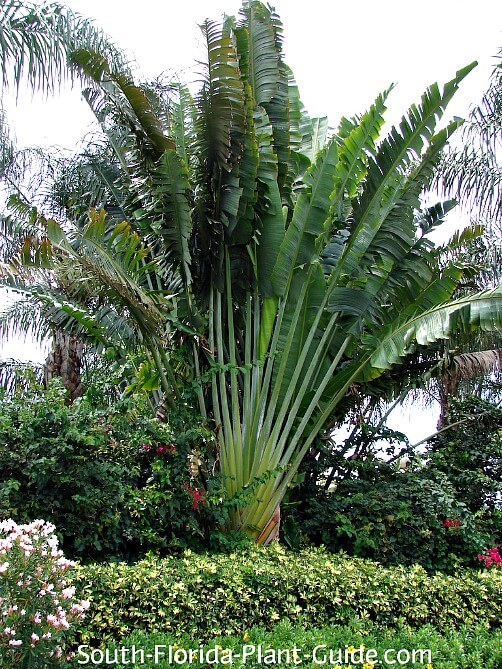
These plants grow to be enormous, with huge leaves sprouting from a long stems in a flat, fan-shaped pattern like a peacock's tail.
The leaf bases create an intricate, overlapping pattern.
The leaves collect rainwater which flows into the plant's stems, base, and even its flowers, ready to aid a thirsty traveler.
Though it will eventually grow a trunk, this plant needs a wide berth when young.
Because of the immense width and height proportions, this is one of those South Florida "palms" that work best in more expansive landscapes and with larger homes.
Many folk tales surround this plant...
- One that is true: A parched traveler can poke a hole almost anywhere on this "palm" and get enough clean water for a good drink.
- One that is false: The leaves always grow in an east-west direction so a lost traveler can find his way.
- One that is - well, you decide: Stand in front and make a wish in good spirit - and the wish will come true.
Plant specs
Get ready for a giant of a plant - a "travelers tree" can grow very tall and takes up lots of space while young (before it grows a trunk).
The farther south in Florida you go the taller they can get. In northern areas they'll get about 30 feet high. Close to Miami they may reach 50 feet - or more.
The growth rate is fast until a trunk begins to develop. Then the plant settles into a nice, moderate pace.
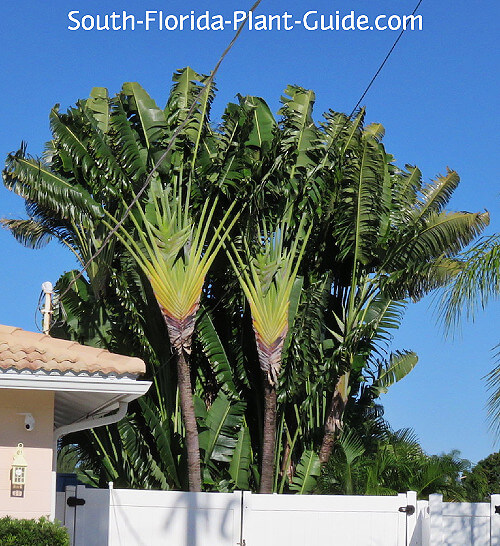
These plants like full sun but can handle part shade, and do best when young in an area where the base stays somewhat shaded. Eventually it will grow into a full sun height.
Travelers do well in Zone 10 or coastal Zone 9B areas.
The trunk is solitary but occasionally offsets will form. These can be removed (though many people don't) to strengthen the main plant and keep its classic look. Flowers look similar to bird of paradise blooms.
Plant with top soil or organic peat moss added to the hole.
Fertilize 3 times a year in spring summer and autumn using a quality all-purpose or palm fertilizer.
Trim off outside leaf branches as needed (and as long as the plant is reachable).
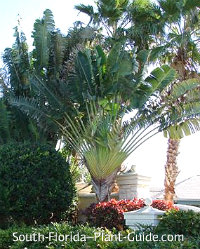
Travelers palms need regular water - another reason to keep the base in a partly shaded area while it's young and getting established.
Plant spacing
Anywhere you plant, keep in mind the growth direction of the crown of foliage.
Because this becomes a very large and wide-spreading plant, place it no closer than 8 to 10 feet from the house.
When using against a fence or short wall, come out about 4 feet or more. If planting a row of them, space 6 to 8 feet or more apart.
This plant will work in a container only while it's very young.
Landscape uses for travelers palm
- single large specimen
- as a very large accent plant
- anchor for a garden bed
A.K.A. (also known as) : Travellers or Traveller Palm (the double "L" spelling is more commonly used in the UK)
GOOD SNOWBIRD PLANT? YES (with year-round irrigation)
COMPANION PLANT SUGGESTIONS : Use plants that have enough character and color not to be overwhelmed by the sheer size of a travelers palm... variegated arboricola , Burgundy loropetalum , dwarf oleander , yellow elder , cape honeysuckle , and silver buttonwood .
Other plants you might like : White Bird of Paradise , Fiddle Leaf Fig
- Large Palms
Search for a Plant
- Small Palms
- Sm. Flowering Trees
- Lg. Flowering Trees
- Shade Trees
- Accent Trees
- Small Shrubs
- 4-6' Shrubs
- Large Shrubs
Spreading Plants
- Groundcovers
Accent Plants
- Ornamental Grasses
- Dracaenas-Lilies-Etc.
Garden & Landscape
- Gardening How-To
- Landscape in a Box
- Snowbird Gardening Book
Stay in Touch
Helpful pages.
- Find A Nursery
- Find A Landscaper
Specialty Pages
- How to Grow Citrus
- Butterfly Gardening
- Native Plants
- Plant Lists
- About Chase Landre
Check out my ebooks!
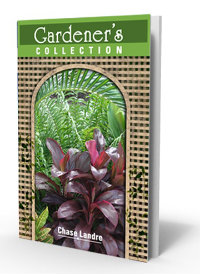
Ebooks that help you grow, design and enjoy your landscape!
Are you a Snowbird?

Here's a handy ebook written just for you!
Get great ideas...
...with our Landscape in a Box!
We've put together plant groupings to help you visualize how various plants look together.
Take a break!

The ultimate guide to low-maintenance plants and landscaping!
An ebook by Chase Landre author of South-Florida-Plant-Guide.com
Learn more!
Get a greener thumb.
Want to learn more about South Florida planting, watering, fertilizing and dealing with weeds and pests?
See our Gardening How-To section for answers!
Get instant curb appeal!

Learn how to get instant curb appeal with fast growing plants and landscaping techniques!
Learn more...

If You Love Palms, Join Today!

- Search for:
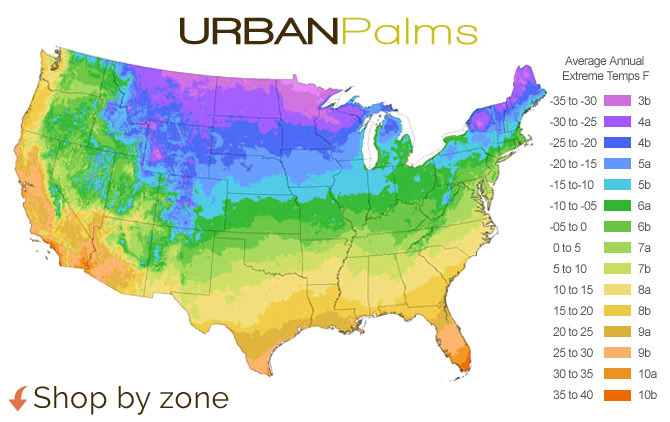
Photo Info.
PHOTOS ARE FOR EDITORIAL PURPOSES ONLY TO PROVIDE A LIKENESS OF THE PLANTS OFFERED
We do not ship the actual plant in the photos. Please check the pot size located in the plant description and refer to the (best packaging) link at the bottom of the page to get a better idea of what you will receive or contact us prior to purchase.
- Cold Hardy Palms
- Tropical Palms
- Other Fine Plants
- Indoor Palms
- Patio Palms
- Clustering Palms
- Solitary Palms
- Colorful Palms
- Fruiting Palms
- Spiny Palms
- Unusual Palms

- Small Palms
- Mid Size Palms
- Large Palms
- Climbing Palms
- Fan & Full Leaf Palms
- Pinnate Leaf Palms
- Starters from $18.
- 4″ Round Mid Size
- 6″ Round Lg. Size
- 8″ Round XL Size
- 9×2.5″ Plug Lg. Size
- 3×8″ Cone Lg. Size
- 4×9″ Cone XL Size

- Striped Cane
- Unusual Cane

- Sabal Palms
- Triangle Palms
- Jelly Palms
- Parlor Palms
- Fan Leaf Palms
- Windmill Palms
- Cardboard Palms
- Ribbon Palms

- Shop by Zone
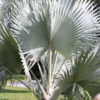
Giant Hawaiian Travelers Palm Tree (ravenala madagascariensis)
Travelers Palm palm is one of natures most recognized and remarkable plants. A mature travelers palm may bloom year round and produce brown fruits that contain light blue seeds. The travelers palm gets its name from the fact that thirsty travelers could find stores of water in many parts of the plant.
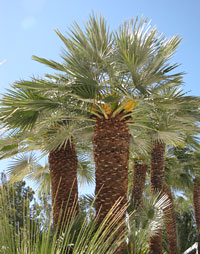
- Description
- Additional information
Shipping Info.
ABOUT THIS PALM Giant Hawaiian Travelers Palm Tree (ravenala madagascariensis) – Travelers Palm is one of natures most recognized and remarkable plants. A mature travelers palm may bloom year round and produce brown fruits that contain light blue seeds. The travelers palm gets its name from the fact that thirsty travelers could find stores of water in many parts of the plant. The growth rate of Hawaiian Travelers Palms will vary greatly depending on soil type, sunlight, temperature and other factors. A few leaves are often trimmed prior to shipping to reduce transpiration and travel stress.
PALM TREE CARE Hawaiian Travelers Palms are easy to grow trees that require little care. They add a wonderful accent to any outdoor space, garden or patio. In cooler zones a containerized palm can be relocated indoors for the winter months. In the northern end of their grow zone Hawaiian Travelers Palms require indoor protection or heavy mulching during the winter months. When you receive your new palm, there is no need to worry about planting right away. Your new plant can be stored for a while by simply placing it in a bucket with about a half inch of water in the bottom and moving it to a shady location. You can then add some mulch to the bucket to keep your plant standing upright. The mulch will also supply nutrients while in storage. This will give you plenty of time to select the ideal location for your new palm.
CONTAINER SIZE All palm varieties grow very well in containers, indoors or on the patio. Allow enough room for growth generally a 10″ to a 20″ diameter, 10″ deep container will suffice to get started. Remember the looser the roots, the taller and healthier your palm will be. When the plant becomes root bound its growth will slow, at that point it is time for a larger pot.
SOIL Hawaiian Travelers Palms enjoy well drained but moist, rich organic mix. Remember try to stay away from wet, mucky or arid soils.
FERTILIZER To help establish your new Hawaiian Travelers Palm, fertilize sparingly at least 6 inches away from the base, tri-annually with a slow time released product. Unfertilized they will tend to grow at a slower pace. Note: The heavy salts in cheaper fertilizers will damage the roots and possibly kill the tree. Its best to use a brand you know and trust.
GROW ZONE & LIGHT Best outdoors if grown in zone 10a-11, find your zone here. This Palm requires 80-100% sunlight. Depending on your location full sun is often best. In the northern end of their grow zone Hawaiian Travelers Palms should be brought indoors or protected during the winter months. The patio zone is 4b-11 which means the potted plant will flourish over the summer months in colder zones but must be brought inside before winter.
BEFORE YOU PLANT OUTDOORS At the nursery these palms are grown under 20-40% shade cloth. If you plant this palm in a brightly lit area you may experience leaf burn. It is best to acclimate this plant to its environment by keeping it outside and slowly moving it into a sunny area over a week or two to avoid stress before planting.
Before leaving, Hawaiian Travelers Palms are inspected, watered, and pruned. Larger plants, generally those that ship in 8″ pots, will be topped to 36″ or 48″ overall, depending on the variety, if necessary, to facilitate shipping. Your new plants’ pot is then bagged to ensure that the soil stays in the pot and not loose in the box. Plants are tissue or kraft paper wrapped and generally secured in place with natural biodegradable peanuts.
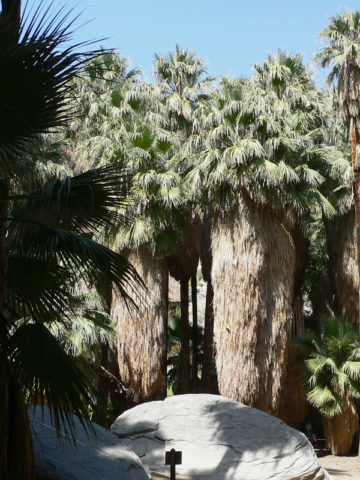
XL Skirted California Fan Palm Tree (washingtonia filifera)
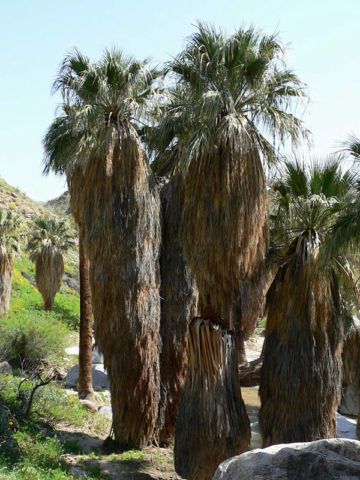
Skirted California Fan Palm Tree (washingtonia filifera)

XL Cold Hardy Washingtonia (washingtonia filibusta)
Cold Hardy Washingtonia (washingtonia filibusta)
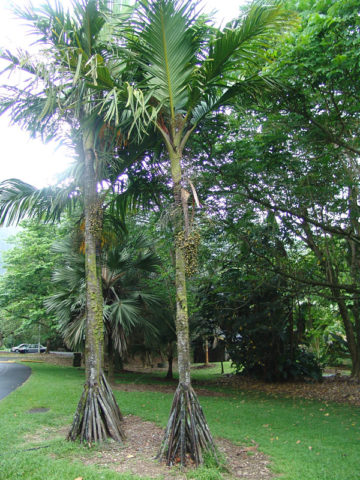
Seychelles Island Stilt Palm (verschaffeltia splendida)
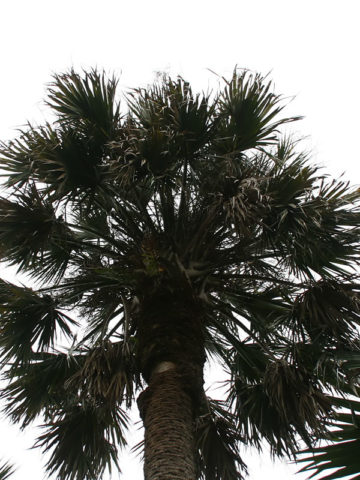
Lg. Robust Sabal Palm (sabal mexicana)
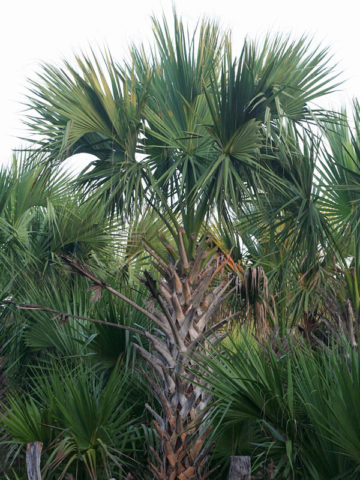
XL Robust Sabal Palm (sabal mexicana)
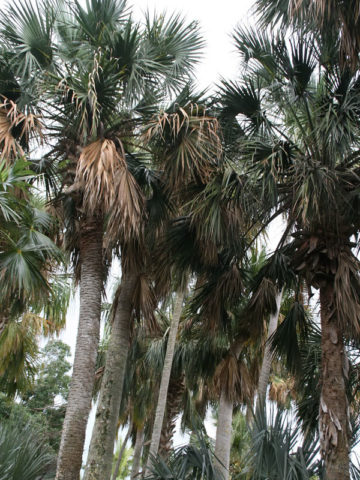
Robust Sabal Palm (sabal mexicana)
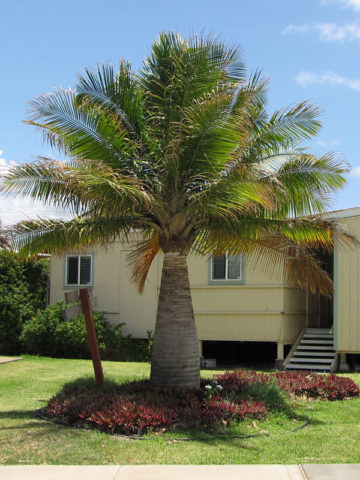
Majestic/Majesty Palm (ravenea rivularis)
XL Fiji Fan Palm (pritchardia pacifica)
Fiji Fan Palm (pritchardia pacifica)
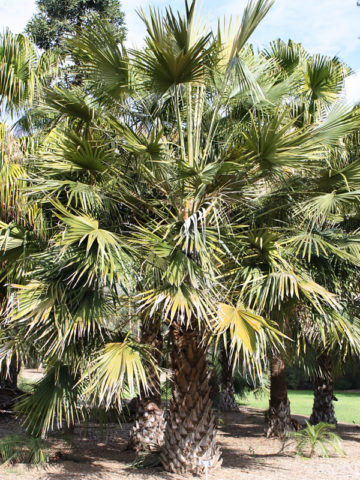
XL Australian Dwarf Fan Palm (livistona muelleri)
Australian Dwarf Fan Palm (livistona muelleri)
Lg. Mapu Paradise Palm (licuala mattanensis mapu)
Golden Licuala (licuala aurantiaca)

- Terms / Privacy

- See All Palms
- Starters from $24.
- Urban Tropicals
- Urban Perennials
- Urban Palms
- Urban Xeriscape
Username or email address *
Password *
Remember me Log in
Lost your password?

How to Grow the Travelers Palm Tree (Ravenala madagascariensis)
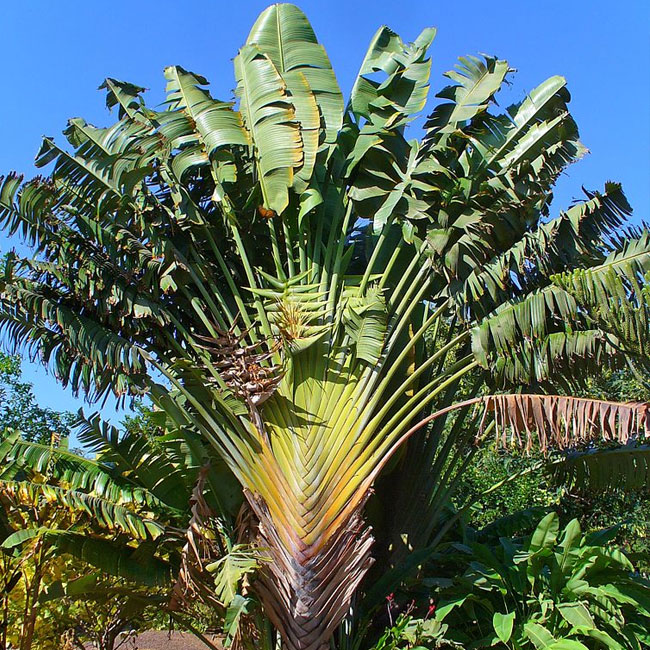
The Travelers Palm Tree, scientifically known as Ravenala madagascariensis , stands out as one of the world’s most recognizable palm trees, thanks to its stunning fronds that transition in color from orange to yellow to green.
It is native to the island of Madagascar, which is located in the Indian Ocean off the southeastern coast of Africa. It is not naturally found anywhere else in the world and is endemic to Madagascar.
This adaptable palm thrives in a wide range of soil types, making it a perfect choice for creating a delightful shaded area in your yard or by the pool.
Quick Facts:
Identifying characteristics of the travelers palm.
In its early stages, the Travelers Palm boasts a subterranean trunk that grows beneath the surface. As it matures, it develops a distinctive short green trunk, approximately 1 foot in diameter, adorned with unique leaf scar rings.
With approximately 30-35 large, fan-shaped leaves that reach lengths of up to 10 feet, this palm’s foliage bears a striking resemblance to banana leaves. These leaves are symmetrically grouped, lending the tree the appearance of a hand fan.
During high winds, the leaves can take on a feather-like appearance due to their shredding. The leaf stems exhibit a captivating gradient of color, ranging from orange at the base, transitioning to yellow in the middle, and culminating in a vibrant green nearer the tip.
An interesting feature of the Travelers Palm is its leaf stems’ ability to store a significant amount of rainwater, which can serve as an emergency drinking supply during droughts. The palm derives its name from numerous accounts of travelers seeking this tree as a source of water.
Flowers and Fruits of the Travelers
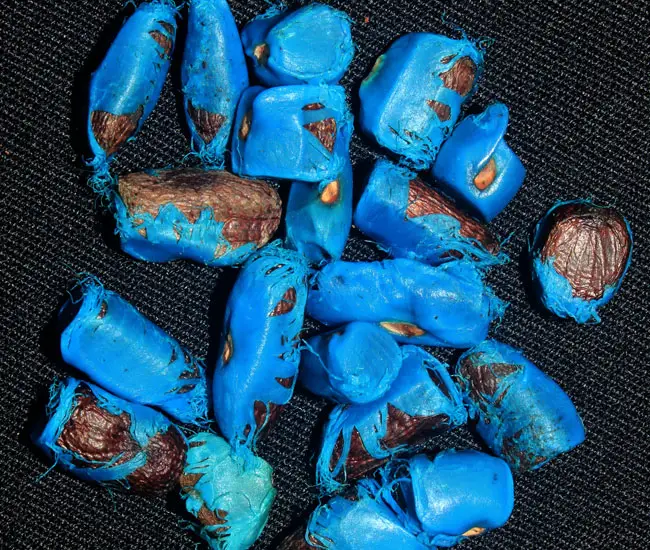
The Travelers Palm produces white flowers, supported by large green flower stalks, with some blossoms reaching sizes as large as 2 feet in diameter. The leaf stalks resemble narrow bowls, efficiently collecting rainwater and becoming quite heavy.
Following the blooming phase, brown fruits appear, opening to reveal stunningly bright blue seeds inside.
Caring for the Travelers Palm
Ravenala madagascariensis exhibits a medium growth rate, reaching heights of 40-60 feet and boasting a spread of 10-15 feet.
Remarkably, the Travelers Palm Tree can withstand cold temperatures down to 30°F, making it suitable for cultivation in USDA Zones 10a (30 – 35°F) to 11 (above 40°F). While it thrives in full sun, it can also adapt to light shade.
This palm thrives in moist, well-drained soil, and its adaptability extends to both sandy and clayey soils. Native to Madagascar, the Travelers Palm Tree effortlessly fits into various soil types and serves as an impressive centerpiece in any landscape.
To prevent nutritional deficiencies, it’s recommended to apply a high-quality palm fertilizer with a continuous-release formula twice a year during the growing season.
Propagation can be achieved through seeds or division of clumps, providing options for cultivating this captivating palm.
Travelers Palm Tree Pictures
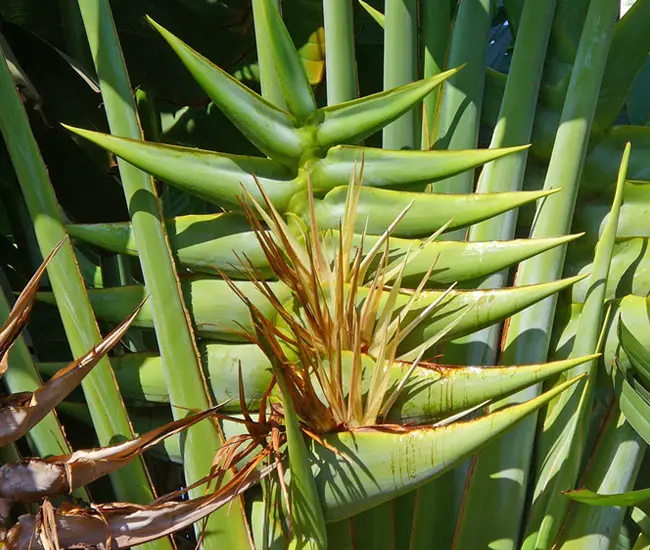
More information can be found on Floridata site.
Latest posts:
3 thoughts on “how to grow the travelers palm tree (ravenala madagascariensis)”.
I need three 8′ travelers palms for the interior.
Looking for a couple of palm trees to be used outside a pool cage. Must be 4 to 5 feet high and thick at the bottom for real privacy. Thanks.
I’m trying to figure out how long it takes until the trunk becomes visible? We like the way it looks, but typically before it gets the trunk.
Comments are closed.

Home » Ornamentals » General Ornamental Info
Travelers Palm Care: Tips On Growing Ravenala Madagascariens
Tropical plants provide some of the most interesting conversation pieces due to their vibrant colors and unique shapes.
The Travelers Palm, aka Ravenala madagascariensis (ra-VEN-ah-la mad-uh-gas-KAR-ee-EN-sis) is a perfect example of both.

Known best by the common name traveler’s palm, this fan-shaped broadleaf evergreen isn’t actually a true palm but a member of the Strelitziaceae family, aka White Bird of Paradise .
Other common names are traveler’s tree and east-west palm (in the US, the common names may have the alternate spelling of traveler’s palm or traveler’s tree).
The names refer to its use by travelers as a source of fresh water, who gather rainwater from the leaf bases and bracts.
As its scientific name suggests, this tree hails from the rainforests of Madagascar. There are four subspecies, which are generally referred to in botanical circles by their local names.
- Bemavo is the largest and most natively common variety.
- Hiranirana is found wherever breaks in the rainforest occur.
- Malama is the rarest of the four
- Horonorona is the smallest and is commonly cultivated as an ornamental perennial.
Travelers Palm Quick Care Tips
- Botanical Name: Ravenala Madagascariens
- Common Name(s): Travelers Palm
- Synonyms: None
- Family & Origin: Strelitziaceae family, native to Madagascar
- Growability: Easy to grow
- Grow Zone: 10-11
- Size: Grows up to 30 feet tall
- Flowering: Rarely flowers indoors
- Light: Bright, indirect light
- Humidity: Prefers high humidity
- Temperature: Thrives in warm temperatures, between 60-80°F
- Soil: Well-draining soil
- Water: Water regularly, keeping soil moist but not waterlogged
- Fertilizer: Fertilize every 2-3 months with a balanced fertilizer
- Pests & Diseases: Susceptible to spider mites and mealybugs, as well as root rot if overwatered
- Propagation: Propagate through division or by planting seeds
- Plant Uses: Makes a great indoor or outdoor statement plant, can also be used for privacy screening.
Agave Flower Grooming And Maintenance
Travelers palm care, traveler palm size and growth.
Horonorona , the variant most commonly cultivated, achieves an average adult height of 30 to 50’ feet tall. By comparison, its largest kin, Bemavo , may achieve a height of 100’ feet.
The central trunk of this species can measure up to 12” inches in diameter and lacks branches.
The fan comprises of a single, vertical plane of petioles ending in 20 to 30 banana-like leaves. The leaves measure 5′ to 10’ feet long and 2′ to 3’ feet wide, with the petioles matching or exceeding the leaf length.
Because of the immense width and height proportions, this is one of those South Florida “palms” that work best in more expansive landscapes and with larger homes.
The cupped bases of each leaf stalk can retain as much as a full quart of water, creating a source of drinking water for passers-by.
While young, the trunk is subterranean, leaving the fan at ground level. When it finally emerges, it sheds the lowest leaves, resulting in leaf scar rings.

These plants grow to be enormous, with huge leaves sprouting from long stems in a flat, fan-shaped pattern like a peacock’s tail.
At the base of the trunk, new shoots appear, with the leaves tightly curled up inside. Numerous suckers will sprout at different times from around the trunk’s base.
Being slow to develop, a traveler’s palm won’t flower until it’s ten years old. Once flowering begins, it will bloom mainly in summer but may produce flowers throughout the year.
The resulting seeds are edible, giving this plant quite a few practical uses.
The growth rate is fast until a trunk begins to develop. Then the plant settles into a nice, moderate pace.
Flowering and Fragrance
Travelers-tree is ideal for creating an exotic, tropical effect with its very large, banana-like leaves, each up to ten feet long and held in fan-shaped formation, and the unusual, small, creamy white flowers held erect in boat-shaped bracts.
During the summer months, the traveler’s palm produces continual white or chartreuse blooms, the nocturnal inflorescence opening every 2 to 3 days.
The exact number of open blooms will vary, with the three-petaled flowers emerging from boat-shaped spathes, giving them a similar appearance to the famous bird-of-paradise.
The leaves always grow in an east-west direction so a lost traveler can find his way. One that is – well, you decide: Stand in front and make a wish in good spirit – and the wish will come true.
This Bird of Paradise relative produces large amounts of nectar, which not only attracts pollinators but is an important food source for native lemurs.
Once fertilized, the flowers give way to 3 ½” inch wooden capsules filled with seeds covered in bright blue arils.
Light and Temperature
This tree loves a sunny spot, faring best when exposed to full sun. It can tolerate partial shade and do best when young in an area where the base stays somewhat shaded. Eventually, it will grow to a full sun height.

East-west palm has a narrower temperature tolerance and should only be grown in USDA hardiness zones 10 to 11.
Temperatures dipping below 60° degrees Fahrenheit will begin to stress the tree, and anything below 40° degrees Fahrenheit can kill it.
Watering and Feeding
The Travelers palm needs soil that remains consistently moist due to its rainforest origins. However, you should be careful not to overwater the plant.
Travelers palms need regular water – another reason to keep the base in a partly shaded area while it’s young and getting established.
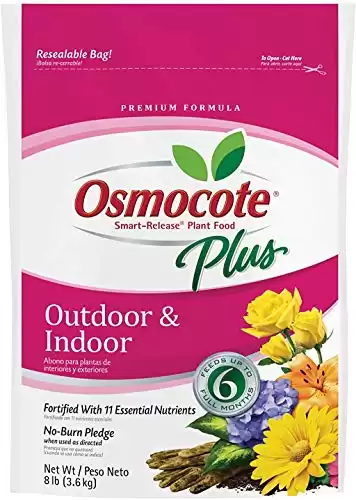
Although the plant is relatively disease resistant, a well-drained planting site produces the healthiest growth.
While some variants have been known to grow in poor soil, adding a nitrogen-rich fertilizer during the growing season will result in a healthier and faster-growing tree.
Avoid adding too much fertilizer, as that can damage plants.
Plant with top soil or organic peat moss added to the hole. Fertilize 3 times a year in spring, summer, and autumn using a quality all-purpose or palm fertilizer. Trim off outside leaf branches as needed (and as long as the plant is reachable).
Soil & Transplanting
A rich, loamy soil with neutral to mild acidity works best for travelers palm plants. The soil should be able to retain some water without becoming too wet.
Brown leaves are a sign of over-fertilization and if the soil does not have good drainage.
You should only repot the plant if you see that the roots are poking through the drainage holes.

Pot the baby plant in moist, well-aerated soil, and ensure that the mother plant is properly covered back up in the soil.
A standard potting mix will do wonders for your plant. You can also include things such as compost, which will help increase drainage.
This tree doesn’t require a lot of maintenance. However, root suckers will create clusters of foliage if not removed, distorting the trademark shape of the agave flower.
How To Propagate Ravenala Madagascariensis
Traveler’s tree may be propagated by both seed and division. The quickest method is to locate rooted suckers, which grow near the main stem.

Separate these at the beginning of the rainy season and plant them to get a head start on new growth.
The seeds require a little more effort. Plant them in moist, sandy soil and keep them at around 68° degrees Fahrenheit. Germination is a slow process for this plant.
Once the seedlings have reached two months of age, they may be transplanted into a rich, loamy soil.
Make sure they have full sun, and add some moss or other organic matter when transplanting to help ensure their roots stay moist.
Travelers Palm Pest or Disease Problems
Due to the frail nature of the leaves, this plant should be sheltered from high winds. It also fares poorly in drought conditions.
Some of the diseases include the leaves of the plant turning yellow. This usually happens due to a lack of nutrients, or if you end up over-watering the plant.
The plant is non-invasive, but has been known to host Colletotrichum gloeosporioides, and is susceptible to various forms of leaf spot and root rot. Spider mites may also infest this tree.
While some parts of the Travelers Palm plant are edible, other parts are poisonous if consumed. Individuals with bee allergies should use caution around this plant, which attracts pollinators.


Suggested Uses For The Travelers Palm
Beyond the obvious visual appeal, traveler’s palm’s high nectar production attracts a wide range of pollinators. This not only includes nectar-feeding birds and insects, but some species of bat.
The bright blue seeds are edible and have a mealy consistency, while the arils have no flavor. Oil extracted from the seeds and their arils can be used for cooking and is midway between coconut butter and palm oil in composition.
Additionally, the plant’s ability to catch rainwater makes it a useful source of extra drinking water. Finally, the sap may be used to create sugar.
Parts of this plant have had a range of uses beyond the obvious ornamental value. The seed oil is considered antiseptic, while the leaves have been used in roofing and as a packing material.
The petioles and midribs are also used in construction as wall materials, while the bark makes good flooring for traditional huts.
Traveler’s palm is too large for the average garden but makes great accents for larger landscapes where it may be the central showpiece.

Growing as a container plant will help limit the tree’s size, but it cannot be easily moved for overwintering.
JOIN Our FREE Plant Care Newsletter
By entering your email address you agree to receive a daily email newsletter from Plant Care Today. We'll respect your privacy and unsubscribe at any time.
Caring For Travelers Palms – How To Grow A Travelers Palm
- Sign up to our newsletter Newsletter
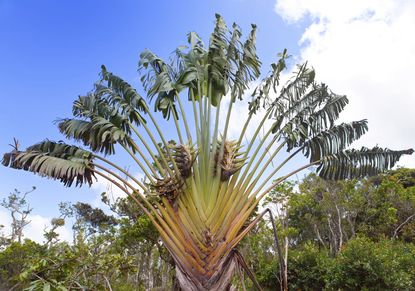
Although travelers palm ( Ravenala madagascariensis ) displays big, fan-like leaves, the name is actually a bit of a misnomer, as travelers palm plants are actually more closely related to banana trees . This exotic plant produces small, creamy white flowers, which often appear year-round. Want to learn about growing travelers palm in your garden? Find out below.
Travelers Palm Hardiness
Travelers palm is definitely a tropical plant, suitable for growing in the warm climates of USDA plant hardiness zones 10 and 11. Travelers palm plants may survive in zone 9, but only if they are well protected in the event of occasional frost.
How to Grow a Travelers Palm
Travelers palm plants tolerate sandy and clay-based soils but prefer moist, rich soil. Although the plant is relatively disease resistant, a well-drained planting site produces the healthiest growth. Provide shade for the base of the plants after planting. Once established, a sunny spot is best, but the travelers palm does fine with a little light shade. Provide shelter from strong winds, which may tear and tatter the huge leaves. This is a good-sized plant that reaches heights of 30 to 50 feet (9-15 m.) and sometimes even more, so provide plenty of space for travelers palm. Allow a minimum of 8 to 10 feet (2-3 m.) from a house or other structure, and 12 feet (4 m.) is even better. If you’re planting more than one, space them at least 8 to 10 feet (2-3 m.) apart to prevent crowding.
Caring for Travelers Palms
Water as needed to keep the soil evenly moist, but never soggy or waterlogged. Feed travelers palm plants once in spring, summer, and autumn, using a fertilizer formulated for tropical plants or palms. A good, all-purpose fertilizer is also acceptable. Prune outer leaf branches as needed, and deadhead wilted blooms if you don’t want the plant to self-seed.
Gardening tips, videos, info and more delivered right to your inbox!
Sign up for the Gardening Know How newsletter today and receive a free download of our most popular eBook "How to Grow Delicious Tomatoes."
A Credentialed Garden Writer, Mary H. Dyer was with Gardening Know How in the very beginning, publishing articles as early as 2007.

Growing Chinese tree peony plants is very satisfying, given their hardiness and vigor. Find out how to master the care of these special peony varieties
By Tonya Barnett

No-till gardening methods are trending, and for good reasons. Do yourself and the Earth a favor by learning some easy alternatives to tilling garden soil.
By Mary Ellen Ellis
Useful links
Stay in touch.
- Job Opportunities
- Marketplace
- Contact Future's experts
- Terms and Conditions
- Privacy Policy
- Cookie Policy
Gardening Know How is part of Future plc, an international media group and leading digital publisher. Visit our corporate site . © Future US, Inc. Full 7th Floor, 130 West 42nd Street, New York, NY 10036.
Receive Plant Releases & Updates.

- Search for:
No products in the cart.
Return to shop
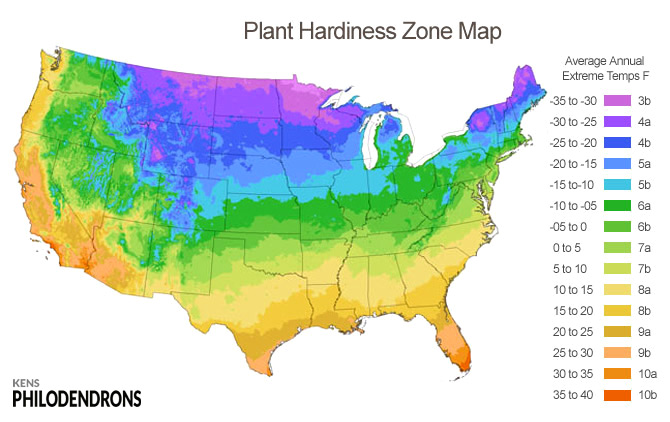
- Choose From Newly Photo’d Plants From The Collection
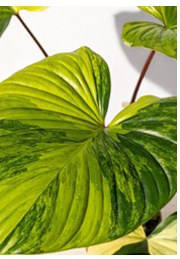
- Dieffenbachia
- Elephant Ears
- Rhaphidophora
- Coco Coir Poles
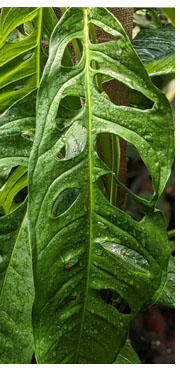
- This Week Under $30.
- Smaller Plants
- Grower Pots
- Ceramic Planters
- Concrete Planters
- Rooting Vessels
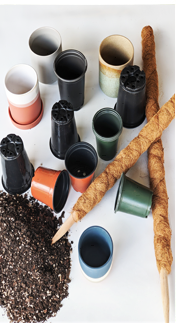
- Our Collection
- 60% Off Overstock
45 Very Rare Monstera Just Added, 96 Varieties Now in Stock, 25% Off @ Checkout
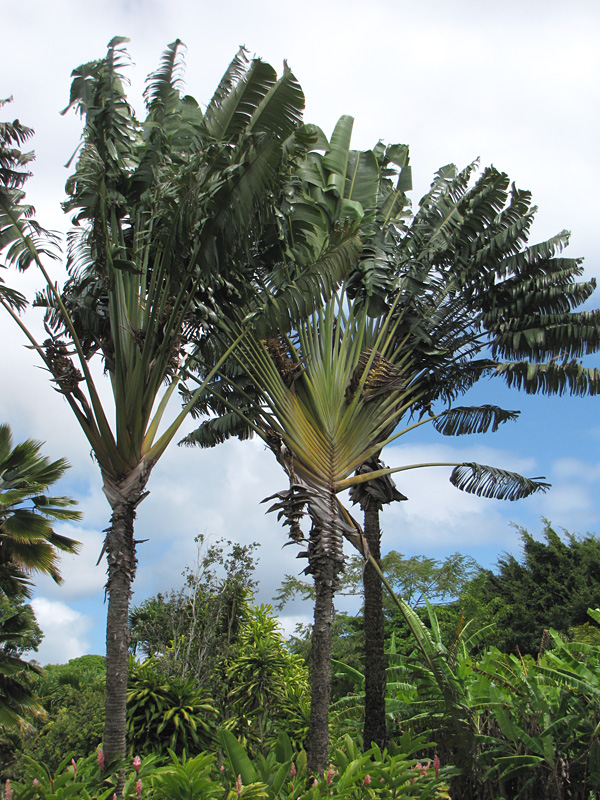
Giant Hawaiian Travelers Palm Tree (ravenala madagascariensisin 4″ Round)
$ 55.99
Site Wide Spring Savings Event Order 2-4 Plants Receive 10% Off Order 5-9 Plants Receive 20% Off Order 10+ Plants Receive 25% Off Not applicable to shipping or sale items. Sale may end at any time without notice.

- Description
- Additional information
- Shipping Info
ABOUT THIS PALM Giant Hawaiian Travelers Palm Tree (ravenala madagascariensis) – Travelers Palm is one of natures most recognized and remarkable plants. A mature travelers palm may bloom year round and produce brown fruits that contain light blue seeds. The travelers palm gets its name from the fact that thirsty travelers could find stores of water in many parts of the plant.
The growth rate of Hawaiian Travelers Palms will vary greatly depending on soil type, sunlight, temperature and other factors. A few leaves are often trimmed prior to shipping to reduce transpiration and travel stress.
PALM TREE CARE Hawaiian Travelers Palms are easy to grow trees that require little care. They add a wonderful accent to any outdoor space, garden or patio. In cooler zones a containerized palm can be relocated indoors for the winter months. In the northern end of their grow zone Hawaiian Travelers Palms require indoor protection or heavy mulching during the winter months.
When you receive your new palm, there is no need to worry about planting right away. Your new plant can be stored for a while by simply placing it in a bucket with about a half inch of water in the bottom and moving it to a shady location. You can then add some mulch to the bucket to keep your plant standing upright. The mulch will also supply nutrients while in storage. This will give you plenty of time to select the ideal location for your new palm.
CONTAINER SIZE All palm varieties grow very well in containers, indoors or on the patio. Allow enough room for growth generally a 10″ to a 20″ diameter, 10″ deep container will suffice to get started. Remember the looser the roots, the taller and healthier your palm will be. When the plant becomes root bound its growth will slow, at that point it is time for a larger pot.
SOIL Hawaiian Travelers Palms enjoy well drained but moist, rich organic mix. Remember try to stay away from wet, mucky or arid soils.
FERTILIZER To help establish your new Hawaiian Travelers Palm, fertilize sparingly at least 6 inches away from the base, tri-annually with a slow time released product. Unfertilized they will tend to grow at a slower pace. Note: The heavy salts in cheaper fertilizers will damage the roots and possibly kill the tree. Its best to use a brand you know and trust.
GROW ZONE & LIGHT Best outdoors if grown in zone 10a-11, This Palm requires 80-100% sunlight. Depending on your location full sun is often best. In the northern end of their grow zone Hawaiian Travelers Palms should be brought indoors or protected during the winter months. The patio zone is 4b-11 which means the potted plant will flourish over the summer months in colder zones but must be brought inside before winter.
BEFORE YOU PLANT OUTDOORS At the nursery these palms are grown under 20-40% shade cloth. If you plant this palm in a brightly lit area you may experience leaf burn. It is best to acclimate this plant to its environment by keeping it outside and slowly moving it into a sunny area over a week or two to avoid stress before planting.
Before leaving, Hawaiian Travelers Palms are inspected, watered, and pruned. Larger plants, generally those that ship in 8″ pots, will be topped to 36″ or 48″ overall, depending on the variety, if necessary, to facilitate shipping. Your new plants’ pot is then bagged to ensure that the soil stays in the pot and not loose in the box. Plants are tissue or kraft paper wrapped and generally secured in place with natural biodegradable peanuts.
Shipping Info.
Policy update.
SHIPPING & HANDLING RATES AND INFO. At the current time we only ship to the lower 48 states. We do NOT ship to AK, HI, PR or internationally. Orders placed from these areas will be refunded and cancelled. Orders placed from the western regions in the US can have an extended delivery time up to 9 days, we strongly recommend selecting 2 day UPS or placing your order in early spring or late fall to avoid hot summer temps. In these regions you are accepting full responsibility for the shipment and understand the risks involved due to distance and temperatures. Western shipments are not guaranteed in the months of May-September.
**Please understand we are unable to constantly monitor the temperatures across the entire United States. If you know the temperatures in your area are not conducive to shipping plants enclosed in a box from Florida to your location, please wait until temperatures are more favorable. We do not guarantee plants due to extreme temperatures during shipping. All shipping rates include all shipping and handling fees. **To better serve you, during certain times of the year, when heat and travel time may become an issue, we offer UPS 2 Day which may be considerably more expensive however safer for your shipment. Due to extended travel time and weather conditions we remove the UPS Ground options to some locations to prevent loss and heat damage. An original unboxing video will be required for any claims(s) of shortage(s).
**About delivery time: During checkout you will notice the shipping time states "once shipped" in days but our "delivery time" is stated in weeks. That is because, our nursery typically receives over 1-2 hundred orders a week with orders consisting of 1 to 20+ plants each, which adds up to around 1,000 plants per week to prepare and ship, when we are only able to properly ship around 125 or so orders per week. We are a nursery of two people doing all the maintenance, propagation, shipping and customer service, working eight days per week. We do not take any short cuts while packaging and each plant is handled and treated with the utmost care. When the orders in our shipping queue reach 300, we turn off the site checkout process until the shipping queue is down to a manageable 200 or less orders. Example: 1. You order on the first of the month with 2 day shipping. 2. Shipping queue orders are at 2-4 weeks. 3. At week 2-4 your order is ready to ship. 4. You selected two day shipping, so your order will be to you in 2 days after UPS picks it up.
WHAT ARE THE SHIPPING & HANDLING RATES? At the current time we do not ship to Alaska, Hawaii and Puerto Rico.
WHAT IF MY PACKAGE IS LOST OR STOLEN? PLEASE TRACK YOUR PACKAGE! Once shipped all sales are final, tracking info. is automatically emailed as soon as it becomes available you must trace the shipment to your door , we simply ship the product to the address supplied to us on your invoice, we ARE NOT responsible for lost, stolen or damaged packages once delivered, this includes heat or cold damage when delivered outside. If you have any issues contact UPS, not us. Chances are you will loose all the money spent, so PLEASE TRACK YOUR PACKAGE and have someone there to accept it. Note: shipping delays may occur if we experience a heavier volume of orders. Orders placed from the western regions can have an extended delivery time up to 8 days, we strongly recommend orders be placed in early spring or late fall to avoid hot summer temps. In these regions you are accepting full responsibility for the shipment, the mortality of the plants ordered and understand the risks involved due to distance and temperatures. Western shipments are not guaranteed in the months of June-September.
HOW ARE PLANTS PACKAGED FOR SHIPMENT? Wow, like a present! With our state of the art packaging we can ensure that your new plant arrives in style. Before leaving our growers all plants are inspected, watered and pruned if necessary. Your new plant is bagged to keep the soil moist and to ensure that the soil stays in the pot not loose in the box. Then your plants are tissue or kraft paper wrapped and secured in place with natural biodegradable peanuts, you will be pleased. click here
DO YOU SHIP PLANTS ANY TIME OF THE YEAR? Sorry, no we don't. Most of the plants offered are very tropical and require temperatures above 40º at all times. On occasion some orders may be delayed if the weather conditions in your area warrant that the shipment be held. This helps to ensure the survival of your new plant. During the winter months when we are no longer shipping plants, our growers spend their time researching new species and new growing techniques to provide you with the most unique and superior species of plants available anywhere.
HOW LARGE ARE THE POTS THE PLANTS COME IN? It varies. All plants for sale will vary in size. In the spring, plants are often smaller than plants shipped in the fall. Most plants designated with a sku ending in -4, -6 or -8 will arrive in a standard 4 inch, 6 inch or 8 inch round growers pot respectively. Our new, reusable, recyclable deep pots are 8 inches deep and 3x3 inches in diameter. Products growing in these pots are easy to transplant and allow for deeper, faster growth and are designated with a -t3, most of these are often come with a 36" totem. (Note: The item sku number can be found just below the buy button.) The color and style of these pots may vary. If we are out of a particular size item, we may ship a larger size at no additional charge. You can see the various pot sizes and actual plants ready to ship. click here
ARE SHIPPING OPTIONS AVAILABLE? No. Sorry, At the present the only shipping option available is UPS Ground ®. UPS ® has proven themselves in the industry and have become the carrier of choice for our family of growers. With reasonable rates, careful handling and on time service you can be sure that your shipment will arrive ready to be enjoyed.
HOW CAN I ESTIMATE THE ARRIVAL DATE? To ensure proper delivery most orders will take 1 - 3 weeks. The delivery time can vary depending on the work load, seasonal holidays and your location. You will automatically be notified by email with tracking information when your order ships, allowing you to trace the shipment to its destination. Rest easy knowing that your plant will not ship until it is inspected, watered, bagged and properly packaged.
WILL ALL OF MY PACKAGES BE SHIPPED BY UPS? Yes. We not only trust UPS® with our plants. They are the exclusive shipper of our growers when it comes to plants, pots and accessories.
CAN ORDERS BE SHIPPED OUTSIDE THE US? Presently we only ship inside the lower 48 states. With the current USDA regulations regarding shipment of live plants, our family of growers are restricted to and governed by the guidelines for certification within the lower 48 states only. Orders shipping to Alaska, Hawaii and internationally will not be accepted.
CAN I CHANGE A SHIPPING ADDRESS ONCE I'VE PLACED AN ORDER? We're sorry. Shipping information can only be changed if you email our customer service immediately after your order has been submitted. We process orders very quickly, and once an order begins the fulfillment process we're unable to modify it. We apologize for any inconvenience, and we hope that in the majority of cases our faster processing times work to your advantage. If you have questions about your order, please contact us via email. click here
WILL MY PLANT SURVIVE IF IT ARRIVES WITH BROWN OR DAMAGED LEAVES? Your, plant should be fine. Occasionally transit damage will occur. If your plant arrives a bit shaken and stressed, simply follow your plants "Care & Culture" instructions and it should return to its full beauty and luster with in a few weeks. Note: We do not warrant bent or broken leaves, it is only natural that some minor damage will occur. Certain plant varieties do not like to be shipped and can loose some or all of their leaves during transit, this is common and the plant is not dead, it is simply in shock and should bud within 30 days or so.
WHAT DO I DO IF MY SHIPMENT ARRIVES CRUSHED OR DAMAGED? It depends on the extent of the damage. If your shipment arrives and the box is severely crushed or damaged, you can either refuse the shipment or place a "Claim" directly with UPS Ground for loss or damage at UPS.com. However, in doing this you must realize that if you have ordered an item that is in short supply or high demand, we can not guarantee a replacement.
WHAT DO I DO IF I DO NOT RECEIVE MY ENTIRE ORDER? Read your packing slip. First, read your packing slip to be sure that everything you ordered has been shipped. Second, If you only receive a partial shipment don't worry. There is no need to panic. If your entire shipment does not arrive within 4 weeks from the time you placed your order, please e-mail us with your order number and name so we can trace the missing item(s) and promptly correct the situation. click here
CAN I CANCEL MY ORDER? Sure, but you must do it quickly. Orders canceled after the UPS tracking information has been sent but prior to shipping will be charged a 30% restocking fee. Understand at that point your plants have been pulled from various greenhouses, tagged, cleaned, bagged, watered, wrapped, bagged again, packaged with p-nuts, paperwork, box, tape and state permits. If for any reason you need to cancel an order it must be done ASAP prior to packaging for a full refund. Due to the current global environment, ALL SALES ARE FINAL ONCE ITEMS ARE IN THE POSSESSION OF THE CARRIER. No refunds or compensation will be provided for any reason.
WHAT IS YOUR PHONE NUMBER? Sorry, There is no available telephone number. Our team members are always in the field maintaining the foliage. Email is the most efficient way to answer questions and concerns. click here
MY ORDER JUST ARRIVED, WHAT DO I NEED TO DO TO THE PLANTS? Immediately unpack your plants very carefully, most damage occurs in the hurried attempt to see the new plants. When your plants arrive you will need to water them if necessary.
WHAT PLANTS ARE SAFE FOR KIDS AND PETS? You will have to do your research. We make absolutely no claims as to plant safety, of any plant whatsoever. If in question, please do your homework prior to ordering. For your pets you may want to visit the ASPCA. Please read our Terms of Service and Return Policies prior to purchasing.

- Actual Plants
- Find Monsteras
- Get Notified of New Releases
Username or email address *
Password *
Remember me Log in
Lost your password?
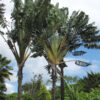
Out of stock
Receive New Plant Releases & Stock Updates.

- Search for:
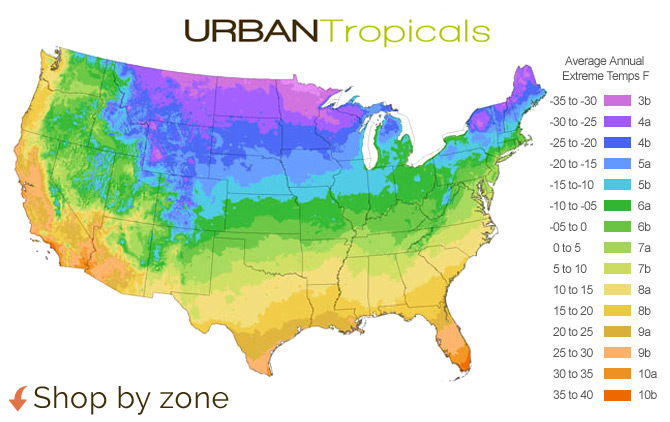
Photo Info.
PHOTOS ARE FOR EDITORIAL PURPOSES ONLY TO PROVIDE A LIKENESS OF THE PLANTS OFFERED
We do not ship the actual plant in the photos. Please check the pot size located in the plant description and refer to the (best packaging) link at the bottom of the page to get a better idea of what you will receive or contact us prior to purchase.
- Tropical Fruit
- Flowering Trees
- Hedges Shrubs
- Flowering Plants
- Bananas Trees
- Cactus Plants
- Croton Bushes
- Dragon Fruit
- Elephant Ears
- Ficus Trees
- Ginger Plants
- Hawaiian Ti
- Philodendron & Other Aroids
- Mulberry Trees
- Sansevieria

- Indoor Plants
- Patio Plants
- Border Plants
- Zone 10 Fruit
- Zone 10 Shrubs
- Zone 10 Trees
- Herbs Spices
- 7×2” Pot
- 4″ Round
- 6″ Round
- 8″ Round
- Better Plants

- Colorful Plants
- Lobster Claw
- Sunset Shrub

- All Containers
- Ceramic Planters
- Concrete Planters
- Glass Containers
- Terracotta Planters
- Shop by Zone
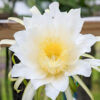
Giant Hawaiian Travelers Palm Tree (ravenala madagascariensis)
Travelers Palm palm is one of natures most recognized and remarkable plants. A mature travelers palm may bloom year round and produce brown fruits that contain light blue seeds. The travelers palm gets its name from the fact that thirsty travelers could find stores of water in many parts of the plant.
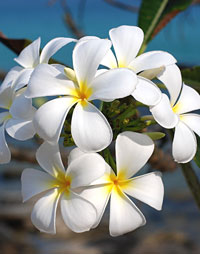
- Description
- Additional information
Shipping Info.
ABOUT THIS PALM Giant Hawaiian Travelers Palm Tree (ravenala madagascariensis) – Travelers Palm is one of natures most recognized and remarkable plants. A mature travelers palm may bloom year round and produce brown fruits that contain light blue seeds. The travelers palm gets its name from the fact that thirsty travelers could find stores of water in many parts of the plant. The growth rate of Hawaiian Travelers Palms will vary greatly depending on soil type, sunlight, temperature and other factors. A few leaves are often trimmed prior to shipping to reduce transpiration and travel stress.
PALM TREE CARE Hawaiian Travelers Palms are easy to grow trees that require little care. They add a wonderful accent to any outdoor space, garden or patio. In cooler zones a containerized palm can be relocated indoors for the winter months. In the northern end of their grow zone Hawaiian Travelers Palms require indoor protection or heavy mulching during the winter months. When you receive your new palm, there is no need to worry about planting right away. Your new plant can be stored for a while by simply placing it in a bucket with about a half inch of water in the bottom and moving it to a shady location. You can then add some mulch to the bucket to keep your plant standing upright. The mulch will also supply nutrients while in storage. This will give you plenty of time to select the ideal location for your new palm.
CONTAINER SIZE All palm varieties grow very well in containers, indoors or on the patio. Allow enough room for growth generally a 10″ to a 20″ diameter, 10″ deep container will suffice to get started. Remember the looser the roots, the taller and healthier your palm will be. When the plant becomes root bound its growth will slow, at that point it is time for a larger pot.
SOIL Hawaiian Travelers Palms enjoy well drained but moist, rich organic mix. Remember try to stay away from wet, mucky or arid soils.
FERTILIZER To help establish your new Hawaiian Travelers Palm, fertilize sparingly at least 6 inches away from the base, tri-annually with a slow time released product. Unfertilized they will tend to grow at a slower pace. Note: The heavy salts in cheaper fertilizers will damage the roots and possibly kill the tree. Its best to use a brand you know and trust.
GROW ZONE & LIGHT Best outdoors if grown in zone 10a-11, find your zone here. This Palm requires 80-100% sunlight. Depending on your location full sun is often best. In the northern end of their grow zone Hawaiian Travelers Palms should be brought indoors or protected during the winter months. The patio zone is 4b-11 which means the potted plant will flourish over the summer months in colder zones but must be brought inside before winter.
BEFORE YOU PLANT OUTDOORS At the nursery these palms are grown under 20-40% shade cloth. If you plant this palm in a brightly lit area you may experience leaf burn. It is best to acclimate this plant to its environment by keeping it outside and slowly moving it into a sunny area over a week or two to avoid stress before planting.
Before leaving, Hawaiian Travelers Palms are inspected, watered, and pruned. Larger plants, generally those that ship in 8″ pots, will be topped to 36″ or 48″ overall, depending on the variety, if necessary, to facilitate shipping. Your new plants’ pot is then bagged to ensure that the soil stays in the pot and not loose in the box. Plants are tissue or kraft paper wrapped and generally secured in place with natural biodegradable peanuts.
Policy Update
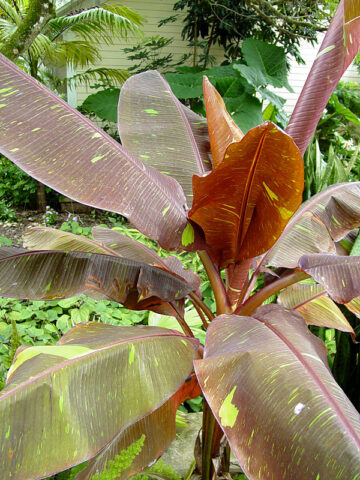
RARE Siam Ruby Banana Tree (musa sp)
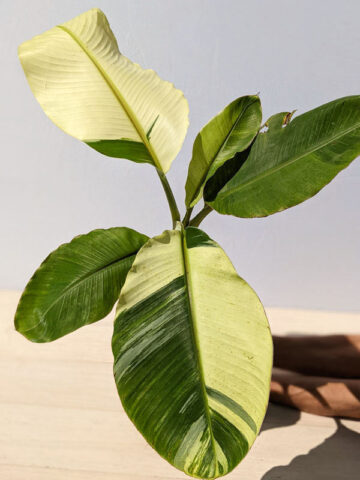
XL Variegated Dwarf Namwah Banana Tree (Excellent Variegation, Actual Plant)
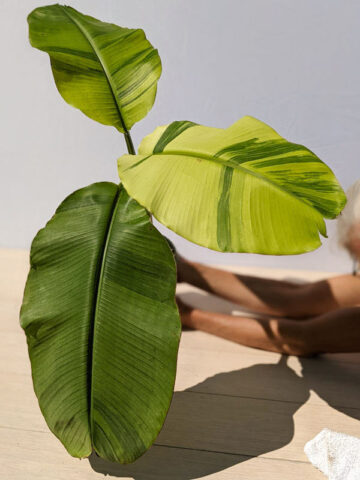
Red Leaf Abyssinian Banana Tree (ensete ventricosum 2x2x3″ pot)
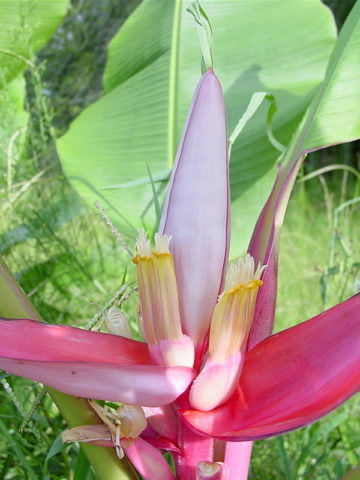
Pink Teddy Bear Banana Tree (musa velutina 2x2x3″ pot)
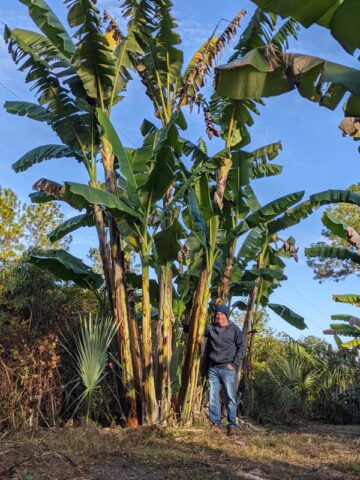
Caribbean Blue Stem Banana Tree (variegated dna 2x2x3″ pot)
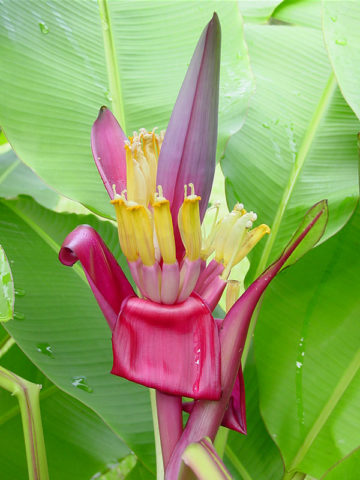
Royal Purple Banana Tree (musa ornata 2x2x3″ pot)
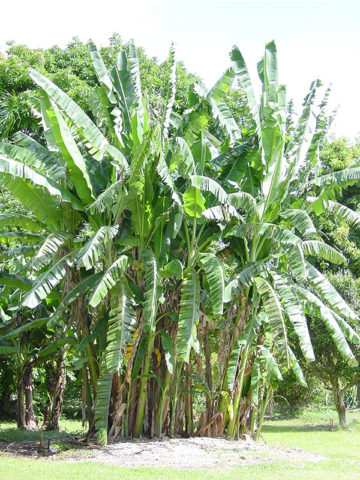
Acuminata Wild Banana Tree (musa acuminata 2x2x3″ pot)
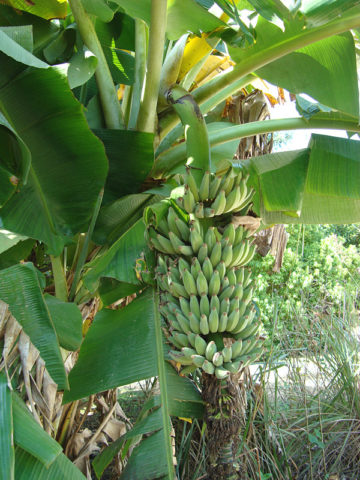
Dwarf Namwah Banana Tree (musa sp 2x2x3″ pot)

XL Dwarf Namwah 304 Banana Tree (variegated dna)
XL Maliong Banana Tree (variegated dna)
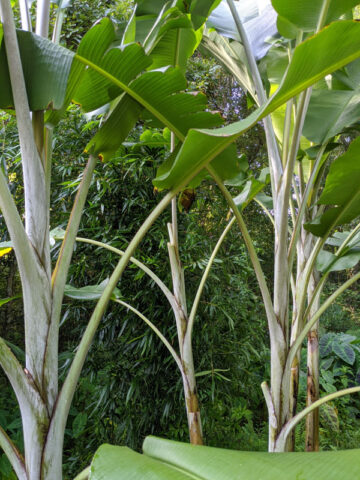
Lg. Boon Voon White Ghost Banana Tree (musa voon)
XL Dragons Blood Banana Tree (variegated dna)
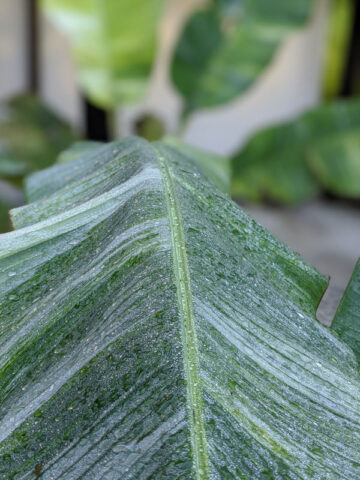
XL Variegated Dragons Blood Banana Tree (musa)
XL Blue Java Ice Cream Banana Tree (variegated dna)
XL Thai Gold Banana Tree (variegated dna)
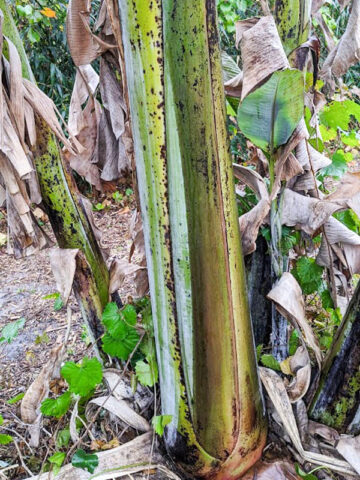
XL Caribbean Blue Stem Banana Tree (variegated dna)
Lg. Lime Variegated Royal Purple Banana Tree (musa ornata)
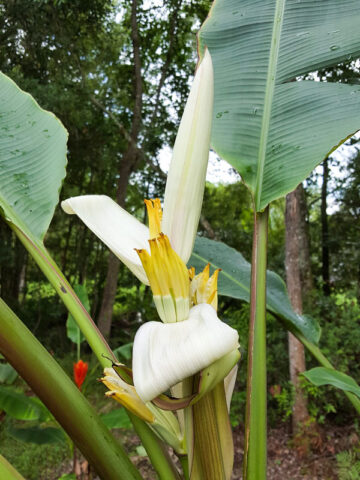
Lg. Maui Violet, White Flowering Banana Tree (musa laterita)
XL King Gran Nain Banana Tree (variegated dna)
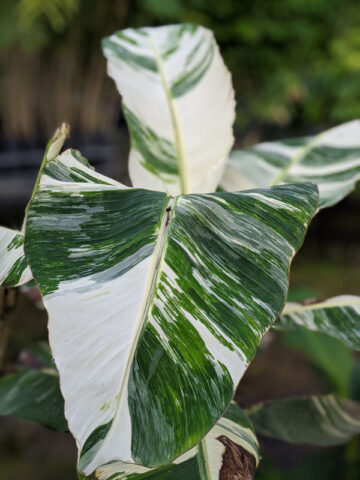
XL King Gran Nain Variegated Banana Tree (musa)
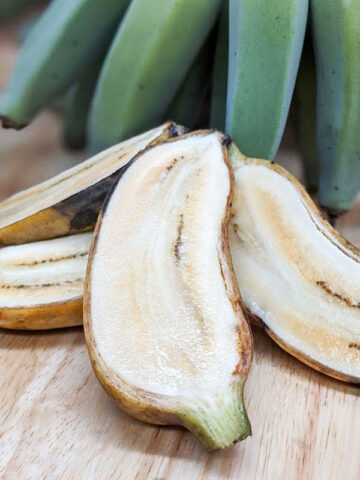
XL Dwarf Namwah Blue Bird Banana Tree (variegated dna)
XL Acuminata Colla Banana Tree (variegated dna)
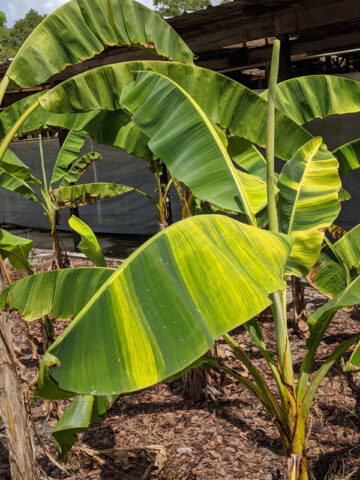
XL Acuminata Colla Variegata Banana Tree (musa acuminata)
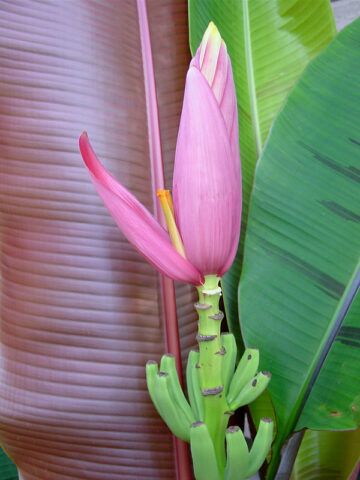
Purple Passion Flowering Banana Tree (musa bordelon)
Lg. Purple Passion Flowering Banana Tree (musa bordelon)
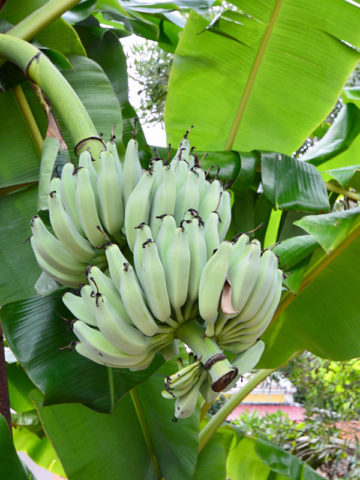
Lg. Hawaiian Blue Java Ice Cream Banana Tree (musa sp)
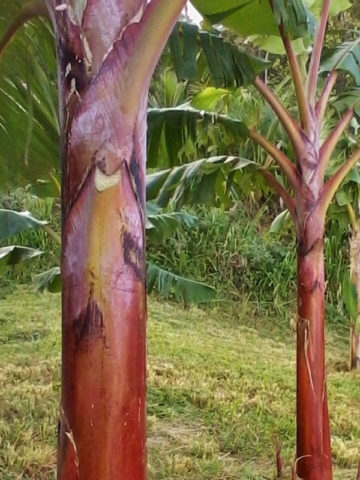
Lg. 3′ Plus Puerto Rican Red Rocket Banana Tree (musa)
Puerto Rican Red Rocket Banana Tree (musa)
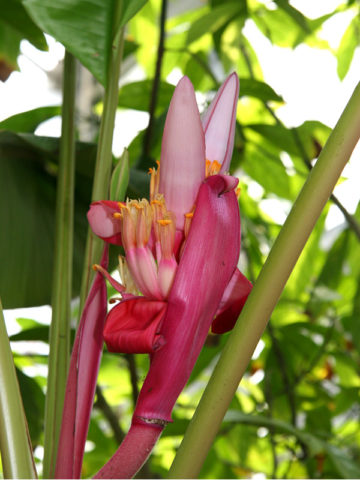
Lg. Pink Teddy Bear Banana Tree (musa velutina)
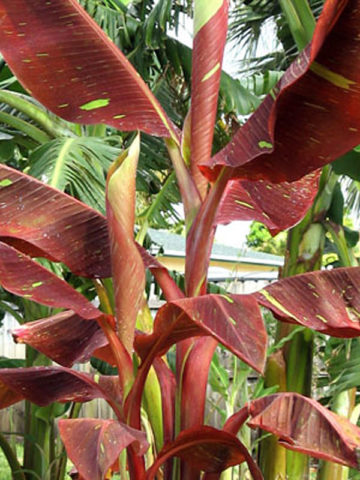
Lg. Siam Ruby Banana Tree (musa sp)
Lg. Royal Purple Banana Tree (musa ornata)
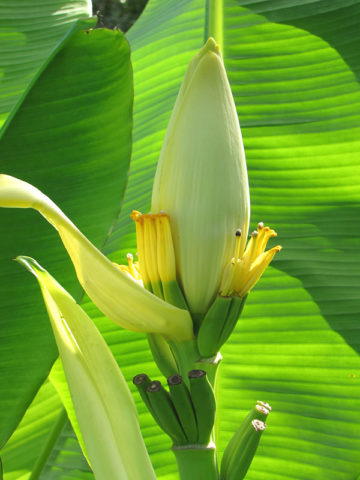
Lg. Siam Yellow Banana Tree (musa sp)
- Terms / Privacy

- Full Catalog
- Fruit Trees
- Crown of Thorns
- Guava Trees
- Pomegranate
- Sunset Shrubs
- Colorful Foliage
- Drought Tolerant
- Herbs & Spices
Username or email address *
Password *
Remember me Log in
Lost your password?
Ravenala Species, Fan Plantain, Traveler Banana, Travellers Tree, Travellers Palm
Ravenala madagascariensis.

Unknown - Tell us
This plant is said to grow outdoors in the following regions:
Glendale, Arizona
Carlsbad, California
Encino, California
Huntington Beach, California
Los Angeles, California
Newport Beach, California
Oceanside, California
San Diego, California
San Jose, California
Santa Barbara, California(2 reports)
Venice, California
Big Pine Key, Florida(2 reports)
Boca Raton, Florida
Boynton Beach, Florida
Cocoa Beach, Florida
Englewood, Florida
Estero, Florida
Fort Pierce, Florida
Hollywood, Florida
Holmes Beach, Florida
Jacksonville, Florida
Lake Helen, Florida
Loxahatchee, Florida
Marathon, Florida
Melbourne, Florida
Merritt Island, Florida
Mims, Florida
Ocala, Florida
Orlando, Florida
Palm Bay, Florida
Palm Harbor, Florida
Port Charlotte, Florida
Port Saint Lucie, Florida
Punta Gorda, Florida
Rockledge, Florida(3 reports)
Saint Petersburg, Florida
Sarasota, Florida
Sebastian, Florida
Sebring, Florida
Venice, Florida
Vero Beach, Florida
Zephyrhills, Florida
Ahuimanu, Hawaii
Haleiwa, Hawaii
Heeia, Hawaii
Honomu, Hawaii
Kaneohe, Hawaii
Kihei, Hawaii
Waikane, Hawaii
Villers-lès-Nancy, Lorraine
Taylor, Michigan
ST JOHN, Mississippi
Grenoble, Rhône-Alpes
Baytown, Texas
Brownsville, Texas
Galveston, Texas
Houston, Texas
Mission, Texas
Portland, Texas
St John, Virgin Islands
St Thomas, Virgin Islands
Featured Videos
Gardener's notes:.
Our 4 traveler palms are 30 feet tall here in southern FL. They bloom prolifically, and they nourish our native pollinators. They ARE ...Read More a lot of work. The flowers each weigh 40 pounds, have a 6 inch stem, and require a tall ladder and saws-all for removal. This is NOT a self cleaning tree, as the dead fronds require saw removal. They trees ARE breathtaking, but do require a bit of work.
Hello, Newcomer to this site. I was wondering if someone here could help me with a problem I seem to be having with my b ...Read More aby Travelers palm. The stem of the newest leaf started to turn into spotted brown/ black the last few days the leaf is fine but the dark spots seems to be growing. I can't seem to figure out what this might be caused by. The rest of the plant looks very healthy. I'm located in Southern California. Zone 10b 11a. it's planted in a pot on my patio in part shade. The soil's PH seems to be good as well as the moisture. I am hoping to find someone on here who has had more experience with this issue. Thats could maybe point out what the dark spot problem might be?. Thank you so much.
We have a couple of large specimens here in St. Thomas which are doing well. One of them surprised us several years ago with a bloom and ...Read More subsequently, beautiful bright blue seeds. I was able to grow a few new plants from the seeds. Unfortunately, it has not bloomed since. Does anyone know how often these mature plants can be expected to bloom? Thanks!
Had a gloriously beutiful one thriving in my backyard for 12 years. It reached about 25 feet, had an enormous thick trunk, seemed to be ...Read More doing great. Then two winters ago, which was fairly wet for southern Calif., it started to flower in February. It had flowered before, but this time it sent out TWO giant flowers at the same time! I had misgivings, as it was also a fairly cold year, hitting 34-38 F several times, and as I say, rather wet. It was growing in a raised mound, so drainage was good, but underneath my whole yard, deep down, is solid clay. Anyway, to make a long story short, I believe the energy it took to flower, and the bad weather led to it's demise. It began a slow spiral downward after the flowers were fully bloomed out about June of that year. I kept hoping it would perk up, tried good fertilizers, tried more water, less water, no fertilizer, but it didn't make it. It's now a year later, and hoping against hope, I've left it standing, thinking it might send a pup up, but I'm afraid I'm going to have to face up to the fact--it's dead. I''m thinking about putting a new one in, but if I have to climb 25 feet up in the air to cut it's flowers off (if I'm lucky enough to get another on to grow as big) I swear, I'm willing to do it! Anybody else ever have a problem like this after flowering?
I have the travelers palm growing in Costa Rica and it does well. However, the plant is over 10 years old and has never flowered. How l ...Read More ong does it live? escot
Hello everyone, As we speak we are experiencing hurricane Earl here on Sint Maarten. We have a beautiful variety o ...Read More f foxtail, royal and traveler palms, which have sadly been quite damaged. I was hoping that someone knows what to do with a broken/snapped stem of a traveler palm, there are about 3 or 4 of them which are more in the middle than on the outside of the palm. I hope we can save this beautiful tree and look forward to any advise. Thank you!
OK, so I got some shoots growing. Luckily I left them around, because last winter was brutal and killed the main palm/tree. I've decide ...Read More d to transplate a couple shoots to another location around the house, while removing the main (dead) one and rearranging other shoots. What the best way to do this? Thanks!
If Spaceman_spiff dug up the 'shoots' instead of cutting them off he would solve the problem. They are seedlings, not suckers. I realise ...Read More this comment comes years after his complaint!
I've several across the rear of my property & although they keep having "babies", they are acting as my privacy fence. I ...Read More also have my most favorite, in the center front focal point of my house & I don't know how to trim it as since going through several hurricanes in the last 5 years, the main, center tree has turned a bit from it's east/west fan, many of it's leaves are shredded, is at least 20 ft tall & the trunk is quite skinny. It also has may babies which are in all different directions. I've also found that cutting anywhere on the stem of a leaf will result in part of next new leaf being cut as well.
This is an awesome and huge palm tree. I have had it for five years (survived the three hurricanes). The tree has several off-shoots wh ...Read More ich I have kept because of the unique look behind my pool. I think the highest frond is about 30 feet. My concern is that I do not kill the tree by trimming too much.
I have one of these growing in my back yard here in St. Petersburg, Florida (zone 9b), and it is huge after only 3 years. However, I had ...Read More heard and/or assumed that the reason it's called a "traveler's tree" or "traveler's palm" (although not really a palm) is because the leaves are always oriented in an east-west direction, not because of anything to do with water being stored inside, as mentioned above. Anyway, it's a great addition to my yard and always receives many comments. It's at least 20 feet tall now, just starting to show its "trunk," and I just noticed two days ago that a flower is emerging, so I may post a photo or two in the next few days. The only real drawback I consider is that it is constantly trying to "make babies" that shoot up near the base of the trunk. I have seen a couple of these trees around town where the "babies" were allowed to grow, and the tree just became a huge ugly mess, looking more like a giant bush than a tree. Every few days (especially in summer) I cut the shoots off at ground level, so that it will only have the one main plant/trunk, and so it will remain neat, tidy, and symmetrical. I noticed in the photos posted here that none of the large trees seemed to have any shoots coming up near the trunk. I wonder why mine continuously makes so many? Another slight drawback is that when it's windy (and with the 3 hurricanes that passed by last year, and one already this year, it's windy a lot!), it pretty much shreds the leaves, which is sad because they look so much neater when not wind-shredded. I periodically cut off the oldest leaves because they become so shredded and ugly. But I still love the tree because of its overall symmetry! Update on September 24, 2005 Back in July I expected to take photos of a newly-emerging flower spike on my specimen of this plant, but it took a lot longer for the spike to fully emerge than I expected! (I guess it takes a lot of energy and nutrients to make a bloom this big). spaceman_spiff (John)
It's a very nice plant that I've successfully grown indoors for the last year, but does tend to need a large pot if grown indoors and a r ...Read More oom with windows facing the equator (north facing in the southern hemisphere and south facing in the northern).
Recently purchased two of these that were marked down for quick sale (7 gallon containers) that were damaged by the 3 Florida storms. Fr ...Read More onds are pretty damaged, however, one of the plants had a frond that was ready to open/bloom, and the next day after planting it did. I don't know how to take care of this plant yet, my neighbor, who has various types of banana trees in his yard, said that he would leave the heavily leaning and damaged leaves on the plant; I did remove all the broken fronds.
An interesting monocotyledoneous tree, with a palm like stem that may grow up to 20 m high. It has a rhyzome, of the same type as others ...Read More of the same family, generating new stems every year. The leaves are huge, looking like banana tree's leaves. The petioles are disposed as a fan, and between them there's a space, where fresh water is stored (when it rains, the water infiltrates in those spaces, filling them with water. You could even drink it). The inflorescence ressembles the one of Heliconia, but green. Inflorescence and flowers aren't really visually important, but may atract birds. When the fruits rippen, lots of interesting blue seeds fall. I don't know how, but the seeds' blue coat seems to produce a certain pigment that could be extracted. Requires a rich organic soil, hot temperatures, full sun and moderate humidity
Flower bracts and leaf sheaths hold rain water useful for emergency drinking, hence the common name. This palm-like tree needs rich, mois ...Read More t, well drained soil and a sunny spot in a hot climate. Propagate by seeds in the spring or division of suckers at any time.

Get to Know Dave's Garden
- Report an error
Follow Dave's Garden


- Home & Kitchen
- Home Décor Products
- Artificial Plants & Flowers
- Artificial Trees

Enjoy fast, free delivery, exclusive deals, and award-winning movies & TV shows with Prime Try Prime and start saving today with fast, free delivery
Amazon Prime includes:
Fast, FREE Delivery is available to Prime members. To join, select "Try Amazon Prime and start saving today with Fast, FREE Delivery" below the Add to Cart button.
- Cardmembers earn 5% Back at Amazon.com with a Prime Credit Card.
- Unlimited Free Two-Day Delivery
- Streaming of thousands of movies and TV shows with limited ads on Prime Video.
- A Kindle book to borrow for free each month - with no due dates
- Listen to over 2 million songs and hundreds of playlists
- Unlimited photo storage with anywhere access
Important: Your credit card will NOT be charged when you start your free trial or if you cancel during the trial period. If you're happy with Amazon Prime, do nothing. At the end of the free trial, your membership will automatically upgrade to a monthly membership.
Buy new: #buybox .a-accordion .a-accordion-active .a-price[data-a-size=l].reinventPriceAccordionT2 .a-price-whole { font-size: 28px !important; } #buybox .a-accordion .a-accordion-active .a-price[data-a-size=l].reinventPriceAccordionT2 .a-price-fraction, #buybox .a-accordion .a-accordion-active .a-price[data-a-size=l].reinventPriceAccordionT2 .a-price-symbol { top: -0.75em; font-size: 13px; } $314.87 $ 314 . 87 FREE delivery Monday, June 24 Ships from: Amazon.com Sold by: Amazon.com
Return this item for free.
Free returns are available for the shipping address you chose. You can return the item for any reason in new and unused condition: no shipping charges
- Go to your orders and start the return
- Select your preferred free shipping option
- Drop off and leave!
Save with Used - Like New #buybox .a-accordion .a-accordion-active .a-price[data-a-size=l].reinventPriceAccordionT2 .a-price-whole { font-size: 28px !important; } #buybox .a-accordion .a-accordion-active .a-price[data-a-size=l].reinventPriceAccordionT2 .a-price-fraction, #buybox .a-accordion .a-accordion-active .a-price[data-a-size=l].reinventPriceAccordionT2 .a-price-symbol { top: -0.75em; font-size: 13px; } $208.46 $ 208 . 46 FREE delivery Friday, June 21 Ships from: Amazon Sold by: Amazon Warehouse
Image unavailable.

- To view this video download Flash Player

Nearly Natural Giant Travelers Palm Artificial Silk Trees, 10" D x12 W x8.5 Ft, Green
Purchase options and add-ons, about this item.
- Will maximize awkward or wasted spaces
- Beautiful Green Palm leaves
- Created with the utmost care from the Finest materials
- Green Foliage arches away from the stem
- Recommended for indoor use or a covered, protected outdoor location
Buy it with

You might also like

From the brand

Welcome to Nearly Natural

Explore our selections today to bring some warmth into your space without any maintenance, the perfect time and money-saving option.
How did we get our start?
Our experience dates back over 75 years. Generation after generation, the Nearly Natural family found themselves inspired by the beautiful gifts nature has to offer.
What makes our products unique?
Product designers craft every item to replicate mother nature’s beauty using premium materials. You can bring the beauty of any corner of the world into your home.
Why do we love what we do?
We love designing products to suit every lifestyle. Our wide selection is sure to liven your indoor and outdoor space, no matter your style or budget.

Outdoor Faux Trees and Plants
Visit the Store

Our Most Loved Faux Trees

New Faux Trees

Spring & Summer Wreaths

Artificial Plants & Baskets

Fake Floral Arrangements

Fall and Harvest Faux Decor

Artificial Christmas Decor
From the manufacturer.

Nearly Natural is the home of exceptionally lifelike faux trees, plants and floral arrangements. We take pride in designing high-quality artificial greenery, with a keen focus on detail. What makes us different is that designers craft every item to replicate mother nature’s beauty using premium materials such as wood. With many selections to choose from, you can bring the beauty of any corner of the world into your home today. Whether it's the verdant landscapes of North America, the lush greenery of Europe, or the vibrant flora of Africa, we have something to suit every lifestyle. Our items traverse trends for a timeless appeal in any home. Explore our selections today to bring some warmth into your space without any maintenance, the perfect time and money-saving option.

Videos for this product

Click to play video

Brand Video - Nearly Natural
Nearly Natural
Product information
Warranty & support, product description.
Add a slice of paradise to your home or commercial interiors with this 8.5’ giant travelers artificial palm tree. It will brighten any dying space with its realistic palm leaves that extend in several stalks. Perfect for display in tight spaces of your patio, breakfast nook, and sun room, or place it beside your mahogany cabinet to soften the space.
Looking for specific info?
Compare with similar items, customer reviews.
Our goal is to make sure every review is trustworthy and useful. That's why we use both technology and human investigators to block fake reviews before customers ever see them. Learn more
We block Amazon accounts that violate our community guidelines. We also block sellers who buy reviews and take legal actions against parties who provide these reviews. Learn how to report
No customer reviews
- Amazon Newsletter
- About Amazon
- Accessibility
- Sustainability
- Press Center
- Investor Relations
- Amazon Devices
- Amazon Science
- Sell on Amazon
- Sell apps on Amazon
- Supply to Amazon
- Protect & Build Your Brand
- Become an Affiliate
- Become a Delivery Driver
- Start a Package Delivery Business
- Advertise Your Products
- Self-Publish with Us
- Become an Amazon Hub Partner
- › See More Ways to Make Money
- Amazon Visa
- Amazon Store Card
- Amazon Secured Card
- Amazon Business Card
- Shop with Points
- Credit Card Marketplace
- Reload Your Balance
- Amazon Currency Converter
- Your Account
- Your Orders
- Shipping Rates & Policies
- Amazon Prime
- Returns & Replacements
- Manage Your Content and Devices
- Recalls and Product Safety Alerts
- Conditions of Use
- Privacy Notice
- Consumer Health Data Privacy Disclosure
- Your Ads Privacy Choices
- Faux Living Walls
- Faux Trees >Topiary >Bonsai
- Accent Planters
- Faux Cactus >Succulents
- Faux Fire Retardant Greenery
- Outdoor Faux Palm Trees> Topiary> Plants
- Preserved and Artificial Moss
- Faux Boxwood Collection
- Ultimate Preserved Collection
- Faux Tropical Palm Collection
- Faux Potted Arrangements
- Wall Floor Faux Grass Mats >Grasses> Bark> Rock
- Faux Flowering Collection
- Faux Fruits Vegetables Herbs
- Faux Palm > Tree Twig Branches
- Faux Greenery
- Fall and Halloween Decor
- Christmas Trees>Garlands>Wreaths> Decor
- Silk Plant Cleaner Moss
- Special Offers
- Contact 1-877-252-877-1675 |1(440)899- 4947 | [email protected]
- Digital Catalogs
- Our Guarantee
- Follow us on Social Media !
- Creative Corner
- See What is New!
- Delivery Time
- Christmas Tree Assembly
- Product Information
- Earthflora In the News
- Bestsellers
- Shipping Free Shipping on orders $100 or more inland USA!
0 items in cart
Subtotal: $0.00

- Tropical Artificial Palm Trees > Plants>Thatch >Birds
- Interior Tropical Palm Artificial Trees
- Tropical Artificial Travelers Palm
Giant Travelers Palm Artificial Tree
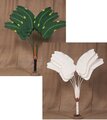
7'Canvas Curved Travelers Palm Tree

EF-4982 9 foot Travellers Palm 17 stems, 16 leaves and 1 bud

8.5 Foot Giant Travelers Palm Artificial Tree
- #Decorative House Plants and Trees
- Description
- Specification
- General Info
- Shipping info
- Payment methods
Add a slice of paradise to your home or commercial interiors with this 8.5’ giant travelers artificial palm tree. It will brighten any dying space with its realistic palm leaves that extend in several stalks. Perfect for display in tight spaces of your patio, breakfast nook, and sun room, or place it beside your mahogany cabinet to soften the space.
Specifications
Height: 8.5 Ft.
Width: 12 In.
Depth: 10 In.
Pot Size: H: 9.5 In. W: 12 In. D: 12 In.
62 x 62 x 14
- Weight 24 lbs
General Product Information
MEASUREMENTS/SHAPING/COLOR: Items are measured, flat and unshaped.
Height/Length : From the bottom base to the top leaf tip – straight up. Width : From tip of one end to tip of the other end. Measurements can depend on your shaping technique and can vary within a couple of inches. Products are manufactured by hand; therefore, measurements and color may vary slightly. Color will vary slightly from one shipment to another shipment. Stock samples are available by customer request before purchasing product. CUSTOM-MADE ITEMS: Earthflora's custom trees are fabricated on hand selected, quality artificial wood. All artificial plants and trees are manufactured according to the specifications of our designers and are inspected before shipping to be free of defects. DECORATIVE CONTAINERS: Decorative Pots are measured by overall height, outside diameter, inside diameter (lip to lip), bottom diameter. Due to slight changes in molding process, measurements are sometimes rounded to the closest inch. Decorative containers are not waterproof. Earthflora is not responsible for any damage caused by weather. Decorative containers must be ordered separately. They are not included in the price of any item.
INHERENT FIRE RETARDANT FOLIAGE: We infuse the necessary Fire-Retardant additives directly into the fabric and polyethylene branch components prior to printing and injection molding. Our Fire-Retardant system will not dissipate, wash off, drip off, or leave a messy, oily film. It meets all the National Fire Prevention Association 701 Tests for non-flammability plus the ASTM E84-95, Standard Test Methods for Surface Burning Characteristics of Building Materials. This test method is also published under the following designations: ANSI 2.5, NFPA244, UBC 8-1 (42-1) UL73. A ll fire-retardant Foliage will have an “R” in the prefix of the SKU number such as AR, GR-, PR, WR, GPR and be indicated by a Fire-Retardant Symbol. All PVC material (Marked with “C” in the prefix of the SKU number) is Inherently Fire Retardant. Necessary documentation is available upon request.
We are currently offering FREE GROUND SHIPPING on all orders shipping inland USA $100 and over!
We offer express delivery options Next Day Air, 2nd Day Air, 3 Day Saver , 5-6 Day Rush. All other orders will generally take 7-10 (Excludes custom made items) this EXCLUDES weekends & Holiday If you ordered express service your order will ship during business days Monday through Friday excluding weekends & holidays. If the order is placed before 12:00 noon est we can express the order that day , if the order is placed thereafter the order will ship the following business day. ***ORDERS SHIPPING VIA TRUCK MAY INCUR AN ADDITIONAL CHARGE FOR SHIPPING IF THIS OCCURS WE WILL CONTACT YOU BEFORE YOUR ORDER PROCESSES FOR YOUR APPROVAL.
Custom made items may take an extra 1-3 days for processing , after processing depending on the service you chose please allow time for delivery. Custom made item, for example any item made on natural wood ie. trees, topiaries etc, your order may take up to an extra 1-3 days for processing to process in addition to the shipping , excluding weekends and Holidays.
Earthflora can not be held responsible for delivery delays due to strikes, poor weather conditions, or any circumstance beyond our control. We will do our best to adhere to the above schedule and process your order in a timely fashion. We look forward to providing you with our very best in quality and service.
Special delivery request are welcome, we want to accommodate your needs the best way we can.
Product questions
We accept the following payment methods:

Signup for Exclusive Deals,
Special discounts.
- Wholesale Opportunities
Information
Help center.
- Potting Kit Help
- Cleveland, OH, US, 44145
- 1-877-252-1675 |1-440-899-4947 | Save 5 % Get free Shipping on orders $100 Shipping Inland USA!
- [email protected]
© 1999 - 2024 Earthflora. All rights reserved.

- Remember me Not recommended on shared computers
Forgot your password?
- TROPICAL LOOKING PLANTS - Other Than Palms
WELCOME GUEST
It looks as if you are viewing PalmTalk as an unregistered Guest.
Please consider registering so as to take better advantage of our vast knowledge base and friendly community. By registering you will gain access to many features - among them are our powerful Search feature, the ability to Private Message other Users, and be able to post and/or answer questions from all over the world. It is completely free, no “catches,” and you will have complete control over how you wish to use this site.
PalmTalk is sponsored by the International Palm Society. - an organization dedicated to learning everything about and enjoying palm trees (and their companion plants) while conserving endangered palm species and habitat worldwide. Please take the time to know us all better and register.

Container Grown Traveler’s Palms

By Big Tex November 18, 2008 in TROPICAL LOOKING PLANTS - Other Than Palms
Recommended Posts
My Traveler’s Palm has grown to the size it is in this picture from a 6" pup in about one year. How many years can I leave it in a pot and it still grow? It is possible tfor it to reach maturity and trunk or flower? I am planning on putting it in a pot about twice the size it is in after winter.
Anyone have any experience in container grown Traveler’s Palms?
Houston, Texas
29.8649°N - 95.6521°W
Elevation 114.8 ft
Sunset zone 28
USDA zone 9a
Average maximum high temperature 93.60 F
Average maximum low temperature 45.20 F
The annual average precipitation is 53.34 Inches
Link to comment
Share on other sites.

I think you could pot grow your traveler's indefinitely if you could step it up in pot size every year. But realistically, I see you getting one, maybe two more years (stepping it up in pot size) as it will get too big and heavy.
I pot grew mine for awhile, then planted it at the size in photo below.
This photo was taken this past June. You can see the trunk of the traveler's palm and also an offshoot (very large now) growing at a right angle to the mother traveler's.
Mad about palms
Nice photos! Mine looks like it's about the same size as the one you first planted. I guess you are right about the size of pots. I have some pretty big pots and it takes a dolly to move them because they are probably 150lbs. I am trying to decide now whether I should eventually plant it. I may be able to put it close to my house on the south side and grow it just fine. I already have a pretty good size Giant White Bird of Paradise growing there and it is doing fine. As you suggested I probably have 2 more years before I am forced to make that decision.
Bump 'em to either 25-35 gallon and watch the years go by.
I've grown palms in 20 gallon pots, but that's the limit, then they go in the ground. Some years ago I had three majesty palms in 20 gallon pots, but they started to decline (appeared to have manganese deficiency). I then put them in the ground. It took more than one year for them to get back to normal. Since then I don't let palms get root bound in 20 gallon pots.
But as for your traveler's palm. I've seen folks plant them up close to their house wall, mainly on a wall with no or few windows. Naturally, they position the traveler's palm so as the fronds fan out over the house wall. That way, especially on a south exposure, they are sheilded from direct north wind, plus they get some heat escaping through the house wall. Further, one could hand a large tarp (attached at roof line) and cover the traveler. Then, one could had some string lights or other heat source if required to protect the traveler if need be.
Hi Big Tex,
What's your lowest winter temperature?
I see you gave an USDA Zone 9a and an average maximum low temperature 45.20 F.
Greetings from Amman/Jordan
Hi Big Tex, What's your lowest winter temperature? I see you gave an USDA Zone 9a and an average maximum low temperature 45.20 F.
The coldest I have seen is 26. But it always warms up quickly during the day. The south part of my house is so sheltered that we have some zone 10 plants they thrive. Last year we only had 4 days below 32.

Put that baby in the ground.
IN Hugetown, you'll get a few years of great growth out of a Ravenala, then a freeze will hammer it.
I'd put it in the ground, and be prepared to replace it when it gets frozen. You might be able to go for quite a number of years.
The bigger it is, the more likely it will be to survive a freeze. I had one that took four days of 24 F, but it was large at the time. Babies croaked.
Plant it out in the spring and stand back.
They're FAST in the ground.
Especially in a humid hot place like Houston.
Let's keep our forum fun and friendly.
Any data in this post is provided 'as is' and in no event shall I be liable for any damages, including, without limitation, damages resulting from accuracy or lack thereof, insult, or lost profits or revenue, claims by third parties or for other similar costs, or any special, incidental, or consequential damages arising out of my opinion or the use of this data. The accuracy or reliability of the data is not guaranteed or warranted in any way and I disclaim liability of any kind whatsoever, including, without limitation, liability for quality, performance, merchantability and fitness for a particular purpose arising out of the use, or inability to use my data. Other terms may apply.
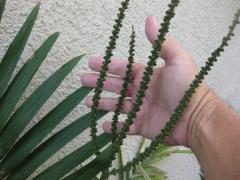
What is the easiest way to determine the difference between the Traveler palm and the Giant Bird of Paradise (Streletzia nicolai)?
Brentwood CA
Owner and curator of Hana Keu Garden
USDA Zone 9b more or less, Sunset Zone 14 in winter 9 in summer
"Its always exciting the first time you save the world. Its a real thrill!"
Traveler's palm (TP) is a much lighter green, and the leaves are all on one plane. TP flowers are bright green, while GBP are either blackish or white. TP is also much faster.
Post a pic, we'll be able to tell you . . .
I KNOW that I have a GBP. I can't tell the difference in one of the photos on thread. My GBP grows in a single plane, once I cut out the pups. the flowers, however, do come out the front or back of the plant.
Too cold in the winter to grow a Traveler here, the GBP does fine.
Thanks! You give me some hope, Big Tex!
If you're planting it out, please keep us posted.
Tex: Put that baby in the ground. IN Hugetown, you'll get a few years of great growth out of a Ravenala, then a freeze will hammer it. I'd put it in the ground, and be prepared to replace it when it gets frozen. You might be able to go for quite a number of years. The bigger it is, the more likely it will be to survive a freeze. I had one that took four days of 24 F, but it was large at the time. Babies croaked. Plant it out in the spring and stand back. They're FAST in the ground. Especially in a humid hot place like Houston.
I think you talked me into planting it. I will keep eveyone up on how it does next spring.

galveston1602
I have one that is very near trunking here on the island, its been in the ground for 5 years, gets burnt occasionally but never bad.
Now, after IKE its is probably going to have quite a hard time making it through the winter if we get any amount of cold as it very shreded and only has a few leaves left upright.
Here's to hoping for a warm winter.
Galveston Island Tx
8' Elevation
Jan Avgs 50/62
Jul Avgs 80/89
Average Annual Rainfall 43.5"
Put it there, and be prepared to lose it, when the temps hit the teens . . . .
(Like my first Easter in Hugetown in 1979, 17 FF, egad . . . . )
Have babies on tap, for the tropical women to visit . . .

Here is our travellor's palm growing in industrial barrel here in chennai !
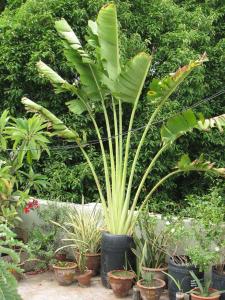
Lots of love,
love conquers all..
Dear Tex Here is our travellor's palm growing in industrial barrel here in chennai ! Lots of love, Kris
Thanks for the picture Kris!
Create an account or sign in to comment
You need to be a member in order to leave a comment
Create an account
Sign up for a new account in our community. It's easy!
Already have an account? Sign in here.
Recently Browsing
- No registered users viewing this page.
- Existing user? Sign In
- IPS Main Site
- Online Users
- All Activity
- My Activity Streams
- Unread Content
- Content I Started
- Leaderboard
- Create New...
Save 30% OFF* Sitewide with code COAST (exclusions apply)*

- Tall Trees Collection
- Olive Trees
- Eucalyptus Trees
- Citrus Trees
- Enkianthus Trees
- Birch Trees
- Dracaena Trees
- Outdoor-Safe
- New Wreaths
- Decorative Accents
- New Stems Collection
- Signature Collection
- Florals & Arrangements
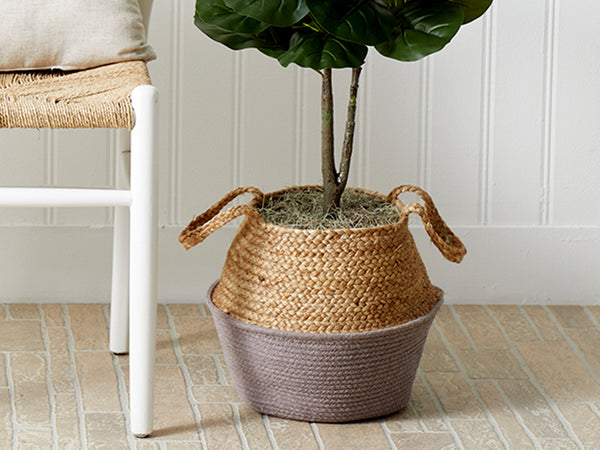
- Olive Tree Collection
- Fiddle Leaf Fig Trees
- Artificial Palm Trees
- Ficus Trees
- Cedar Trees
- Cypress Trees
- Topiary Trees
- Bamboo Trees
- Banana Trees
- Bonsai Trees
- Croton Trees
- Statement Trees
- Flowering Trees
- Trees with Planters
- Artificial Christmas Trees
- Other Varieties
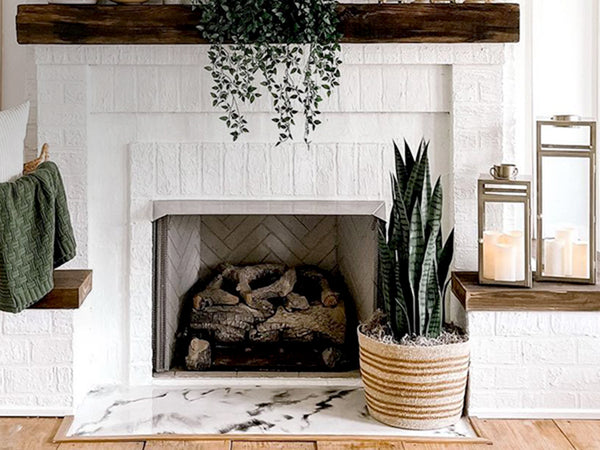
- Hanging Plants
- Plants in Decorative Planter
- Desk Plants
- Flowering Plants
- Floor Plants
- Ledge Plants
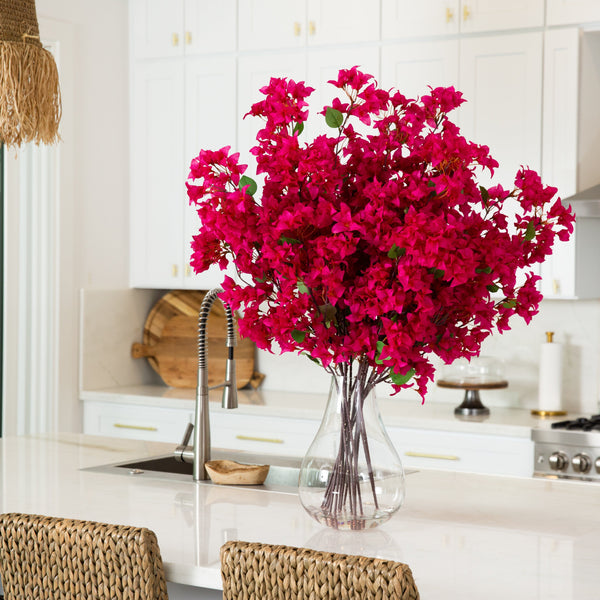
- Bougainvilleas
- Poinsettias
- Silk Flower Arrangements
- Small Arrangements
- Medium Arrangements
- Large Arrangements
- Seasonal Arrangements
- Tropical Arrangements
- Hydrangea Arrangements
- Calla Lily Arrangements
- Peony Arrangements
- Flowers In Vase
- Flower Centerpieces
- Candelabrums
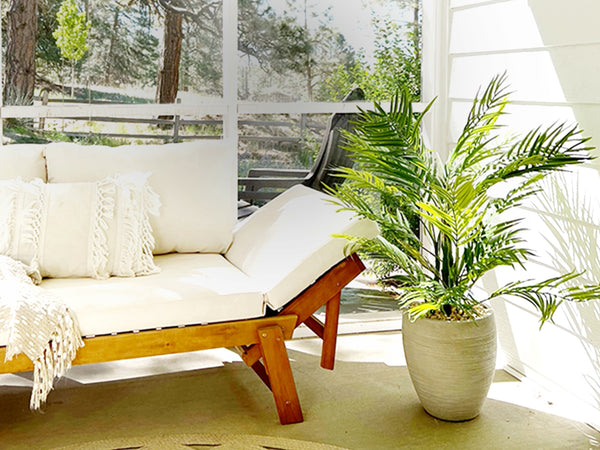
- Outdoor Trees
- Outdoor Plants
- UV Resistant Greenery
- Outdoor Wall Mats
- Bestselling Outdoor Trees
- Bestselling Outdoor Plants
- Artificial Wreaths
- Artificial Garlands
- Spring Wreaths & Garlands
- Summer Wreaths & Garlands
- Fall Wreaths & Garlands
- Halloween Wreaths & Garlands
- Christmas Wreaths & Garlands
- Planters & Baskets
- Valentine's Day
- Mother's Day
- Thanksgiving
- Best Faux Trees
- Best Faux Plants
- Best Faux Outdoor Plants
- Best Faux Outdoor Trees
- Best Faux Silk Flowers
- Best Faux Flower Arrangements
- Best Selling Accessories
- Best Selling Wreaths, Garlands & Swags
- Faux Trees & Plants
- Flowers & Hanging Plants
- Front Porch Essentials
- Planters, Vases & Baskets
- Christmas Clearance
- Americana Collection
- Fall Clearance
- Open media 1 in gallery view
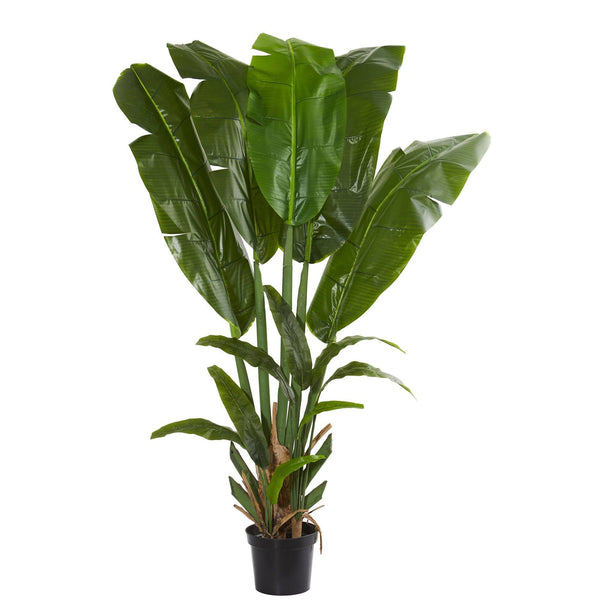
Giant Travelers Palm Artificial Tree
Save 30% OFF* with code COAST
Couldn't load pickup availability
Add a slice of paradise to your home or commercial interiors with this 8.5’ giant travelers artificial palm tree. It will brighten any dying space with its realistic palm leaves that extend in several stalks. Perfect for display in tight spaces of your patio, breakfast nook, and sun room, or place it beside your mahogany cabinet to soften the space.
Width: 12 In.
Height: 8.5 Ft.
Depth: 10 In.
Pot Size: H: 9.5 In. W: 12 In. D: 12 In.
Planter, vase or basket is included in the height.
We offer fast, secure shipping through FedEx.
And returns are easy! 100% Satisfaction guaranteed
Reasons to Love
Enjoy your journey with Nearly Natural.
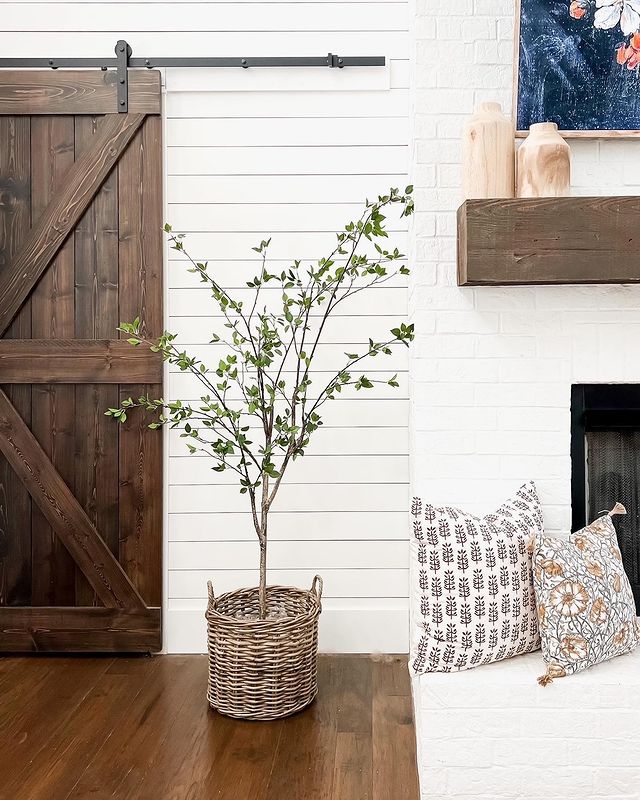
You May Also Like
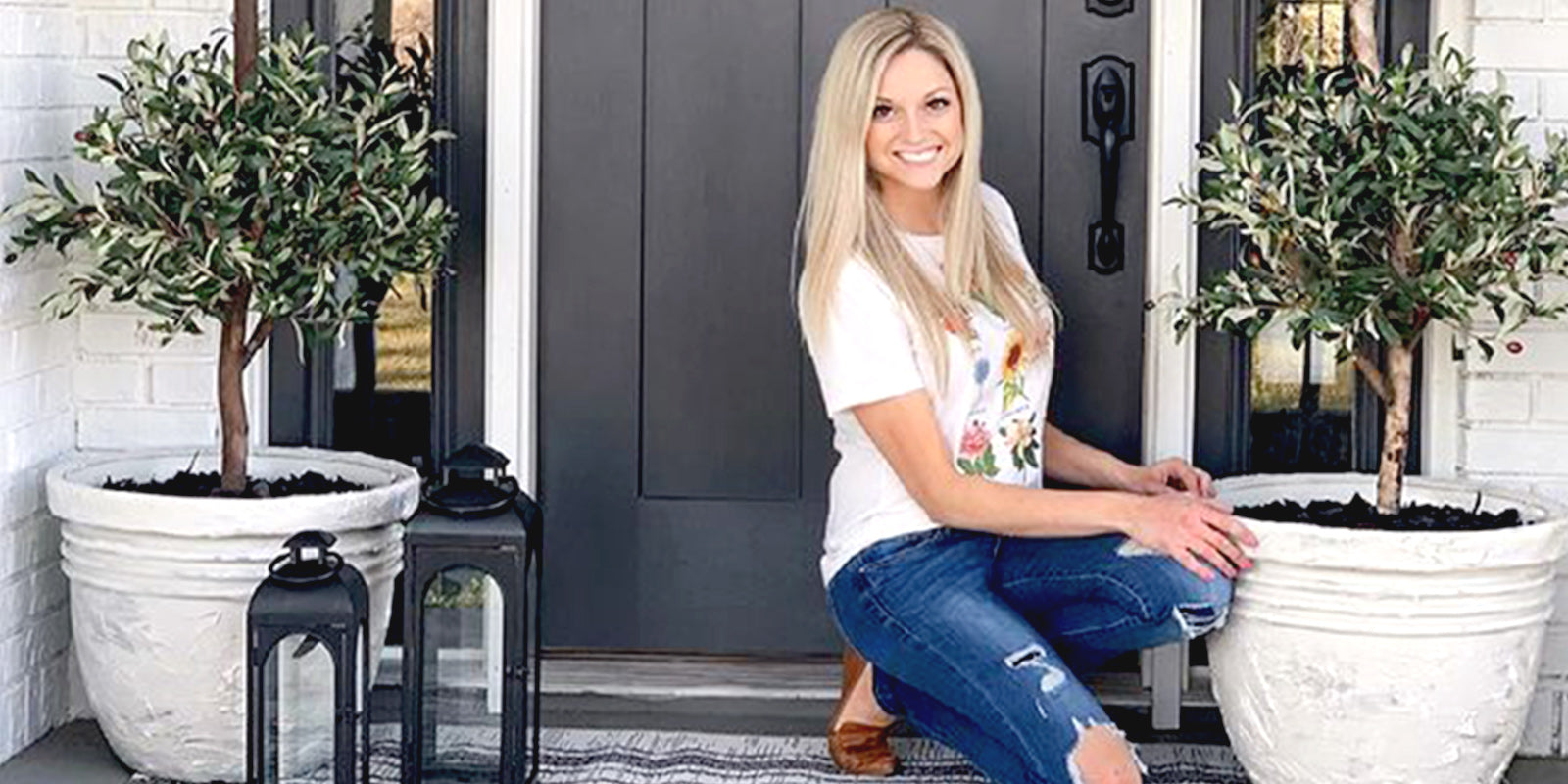
"I love Nearly Natural plants, I share them with my followers all the time :) they love them just as much "
Chelsea, @blessed_ranch

"I have purchased several faux trees and plants from Nearly Natural over the years. I have been extremely happy with everything that I have received. They are high-quality products in my opinion.
@southern_charm_cottage

Shipping and taxes calculated at checkout.
By providing your information, you agree to our Terms of Use and our Privacy Policy . We use vendors that may also process your information to help provide our services. This site is protected by reCAPTCHA Enterprise and the Google Privacy Policy and Terms of Service apply.
Our Emmys Dream Ballot: The 2024 Contenders That Deserve Television’s Highest Honor
Ben travers.
- Share on Facebook
- Share to Flipboard
- Share on LinkedIn
- Show more sharing options
- Submit to Reddit
- Post to Tumblr
- Print This Page
- Share on WhatsApp

Ah, Emmy season. Does it ever end? The answer is a decisive “no” when it comes to 2024, considering we’ve already held one ceremony and are gamely preparing for a second. So many shows, so many artists, so many choices .
That being said: The below selections try to emphasize shows and performers that are either considered off the radar in general or, at least, off the radar of Emmy voters. “Baby Reindeer” and “Abbott Elementary” won’t be mentioned (because everyone is very aware of each program), nor will “The Crown” or “The Morning Show” (for multiple reasons ). A few presumed favorites made their way onto the list, either because their latest seasons were undeniable (“Hacks”), or I don’t fully trust the oft-forgetful Emmy voters to remember them. (“Shōgun,” please , prove any doubters wrong.) This is, first and foremost, a dream ballot. It is a fantasy, and therefore most rules are somewhat flexible. (Some picks may be in categories that do not match the official ballot, but all shows are eligible and on the ballot somewhere .)
So without further adieu: For your consideration, here are IndieWire’s Emmy recommendations. (And if you’re hungry for more, check out our long-running Consider This series !)
Best Drama Series
- “ The Curse ” (Showtime)
- “Elsbeth” (CBS)
- “Interview with the Vampire” (AMC)
- “Shōgun” (FX)
- “Slow Horses” (Apple TV+)
- “Tokyo Vice” (Max)
- “X-Men ’97” (Disney+)
- “Outer Range” (Prime Video)
As may have been mentioned a time or two in the lead-up to Emmy voting, the post-“Succession” state of the Drama category isn’t particularly stacked . Last year’s elite nominees ended or are otherwise ineligible, and the remaining frontrunners (based on the series’ established track records and Emmy voting history) are not exactly the cream of the crop. But here’s the thing: No one has to vote for those shows. Emmy prognosticating can be a self-fulfilling prophecy — where experts pick what they think the voters will like and then the voters look to the experts to see what they should be voting for — but there’s no TV Academy bylaw that says “The Crown” must get its 15 nominations.
So, you know, do that.
Best Comedy Series
- “Hacks” (Max)
- “ Reservation Dogs ” (FX)
- “What We Do in the Shadows” (FX)
- “Girls5eva” (Netflix)
- “I’m a Virgo” (Prime Video)
- “We Are Lady Parts” (Peacock)
- “The Righteous Gemstones” (HBO)
- “Scott Pilgrim Takes Off” (Netflix)
Let me start by saying (so my wife doesn’t file for divorce) that I firmly believe “Curb Your Enthusiasm” deserves a Best Comedy Series nomination. Hell, I would be happy if it won, but that’s an argument for post-nominations, when Larry David’s long-running masterpiece will very likely be nominated because the TV Academy is already quite familiar (and quite pleased) with his work. “Hacks” will also almost certainly be nominated, but come on — even with six Emmy wins in two seasons, you all know we’re not talking about “Hacks” enough.
But I digress. Clearly, there are shows getting far less love despite being just (or nearly) as good. “Reservation Dogs” tops most critics’ lists of the unjustly snubbed, and 2024 marks its best (and last) chance to be rightfully honored. “We Are Lady Parts” held a very quiet Season 2 launch that could be made up for with a few Emmy nods. “The Righteous Gemstones,” “What We Do in the Shadows,” and “Girls5eva” are three veteran comedies that all put comedy first and all deserve recognition for how consistently hilarious, inventive, and sharp each season has been. “I’m a Virgo” came out last summer, so here’s hoping voters haven’t forgotten about it, while “Scott Pilgrim Takes Off” will have to battle animation bias to make the cut. But animation isn’t a genre, so just like “X-Men ’97” in Best Drama above, “Scott” deserves to be here.

Best Limited Series
- “Expats” (Prime Video)
- “Fargo” (FX)
- “Ripley” (Netflix)
- “The Sympathizer” (HBO)
- “Full Circle” (Max)
Best Actors (Any Actors!) in a Drama Series
- Tadanobu Asano, Hiroyuki Sanada, and Anna Sawai, “Shōgun”
- Adelaide Clemens, “Justified: City Primeval”
- Carrie Coon, “The Gilded Age”
- Paul Dano, “Mr. and Mrs. Smith”
- Nathan Fielder, Benny Safdie, and Emma Stone, “The Curse”
- Imogen Poots, “Open Range”
- Carrie Preston, “Elsbeth”
- Ella Purnell, “Fallout”
- Sam Reid, “Interview with the Vampire”
- Ken Watanabe, “Tokyo Vice”
Rather than go category by category (six Best Actor nominees here, six Best Actress nominees there, six more for Supporting and Guest and I’m tired just writing this sentence), I’ve lumped together each genre into one neat little bundle of 10 actors. And yes, I cheated right out of the gate: Sue me, but all three of the “Curse” stars deserve to be nominated, as does this trio from “Shōgun” (if not more). Both Carries should be automatic nominees the second you see their work, and Ken Watanabe has been overlooked too long for his impeccably rugged work in “Tokyo Vice” (yes, “too long” means “for one season” ).
My soft spot for Adelaide Clemens is well-established (that she gives a comic masterclass in “City Primeval” shouldn’t disqualify her for a Drama nod), and as much as I want Walton Goggins to get his second-ever Emmy nod (and first since 2011), this isn’t his category. (Plus, Ella Purnell has the tougher task in “Fallout” and rises to the occasion with good cheer and effortless charisma.) Sam Reid and Imogen Poots gave the two most gonzo turns on TV this season (that were still rooted in emotional depths), which just leaves my Guest Star preference: Paul Dano, in a rather thankless role on “Mr. and Mrs. Smith,” turned his mysterious neighbor into a curious fixation point, one simultaneously understood as Donald Glover’s nagging foe and Maya Erskine’s crush-worthy boy-next-door. He was fun, totally invested in the character, and able to shift the vibe of a scene whenever he felt like it. Give him the gold.
Best Actors in a Comedy Series
- Matt Berry, “What We Do in the Shadows”
- Rose Byrne, “Platonic”
- Larry David, “Curb Your Enthusiasm”
- Walton Goggins, “The Righteous Gemstones”
- Renée Elise Goldsberry, “Girls5eva”
- Devery Jacobs, “Reservation Dogs”
- Jharrel Jerome, “I’m a Virgo”
- Diarra Kilpatrick, “Diarra From Detroit”
- Alanna Ubach, “Ted”
- Kristen Wiig, “Palm Royale”

Best Actors in a Limited Series
- Jonathan Bailey, “Fellow Travelers”
- Calista Flockhart, “Feud: Capote vs. the Swans”
- Jodie Foster, “True Detective: Night Country”
- Hugh Grant, “The Regime”
- André Holland, “The Big Cigar”
- Nicole Kidman, Sarayu Blue, and Ji-young Yoo, “Expats”
- Taylor Kitsch, “Painkiller”
- Andrew Scott, “Ripley”
- Juno Temple, “Fargo”
- Hoa Xuande, “The Sympathizer”
There are some big names on this list, which is almost inevitable given the star-driven state of most modern limited series. Even the non-stars of “Baby Reindeer” have become names of their own accord, so instead of waxing on about Andrew Scott’s haunting turn as Tom Ripley or Hugh Grant’s scene-stealing episode of “The Regime,” let me just say this: Please, please, please make sure Hoa Xuande’s name is read on Emmy nominations’ morning. An impossible role to cast and an even more challenging part to play, the “Sympathizer” lead may have had the most demanding job of any actor here. And he nailed it.
Plus Four More, for Good Measure
Best Animated Series – “Carol and the End of the World” Best Production Design for a Narrative Contemporary Program – “The Curse” Best Unstructured Reality Program – “Jerrod Carmichael Reality Show” Best Variety Talk Series – “John Mulaney Presents: Everybody’s in L.A.”
Most Popular
You may also like.


IMAGES
VIDEO
COMMENTS
The travelers palm flaunts giant, banana-like leaves, some up to ten feet long, forming an elegant fan shape. This tree can reach 30 feet tall and span 18 feet, growing moderately. It suits big landscapes and overwhelms smaller yards. Funny enough, its name comes from travelers quenching their thirst with rainwater collected in leaf sheaths. ...
The beautiful and legendary travelers palm is actually not a palm at all, but spectacular palm-like imposter related to bananas and bird of paradise. These plants grow to be enormous, with huge leaves sprouting from a long stems in a flat, fan-shaped pattern like a peacock's tail. The leaf bases create an intricate, overlapping pattern.
Traveler's Palm (Ravenala) has leaves with straight tips, while the Bird of Paradise (Strelitzia) has pointed ones. ... (Ravenala madagascariensis) is a giant herbaceous plant native to Madagascar but widespread in the tropics. This tree-like perennial found in tropical rainforests can grow up to 32 feet or even 98 feet high in the right ...
Traveler's palm produces robust leaves measuring up to 16 feet long and 3 feet wide. Meanwhile, the bird of paradise plant has smaller leaves than the traveler's palm. The leaves are 1.5 feet long and 0.5 feet wide. The traveler's palm leaves emerge from a long petiole and appear on top of the plant.
Giant Hawaiian Travelers Palm Tree (ravenala madagascariensis) - Travelers Palm is one of natures most recognized and remarkable plants. A mature travelers palm may bloom year round and produce brown fruits that contain light blue seeds. The travelers palm gets its name from the fact that thirsty travelers could find stores of water in many ...
Ravenala madagascariensis exhibits a medium growth rate, reaching heights of 40-60 feet and boasting a spread of 10-15 feet. Remarkably, the Travelers Palm Tree can withstand cold temperatures down to 30°F, making it suitable for cultivation in USDA Zones 10a (30 - 35°F) to 11 (above 40°F). While it thrives in full sun, it can also adapt ...
ideal pot size for travelers' palm The giant stature of Ravenala madagascariensis calls for a 14-16 inches tall container while starting out. If you have enough space to accommodate a big Travelers Palm, keep repotting the plant to 1-2 size bigger containers every two years.
Travelers Palm Care Traveler Palm Size and Growth. Horonorona, the variant most commonly cultivated, achieves an average adult height of 30 to 50' feet tall.By comparison, its largest kin, Bemavo, may achieve a height of 100' feet. The central trunk of this species can measure up to 12" inches in diameter and lacks branches.
The name "traveler's palm" has two likely explanations. The first has to do with the orientation of that giant fan of leaves. The tree is said to align its photosynthetic fan in an east-west orientation, which can serve as a crude compass, allowing weary travelers to orient themselves. I found no data to support this.
Once established, a sunny spot is best, but the travelers palm does fine with a little light shade. Provide shelter from strong winds, which may tear and tatter the huge leaves. This is a good-sized plant that reaches heights of 30 to 50 feet (9-15 m.) and sometimes even more, so provide plenty of space for travelers palm.
Giant Hawaiian Travelers Palm Tree (ravenala madagascariensis) - Travelers Palm is one of natures most recognized and remarkable plants. A mature travelers palm may bloom year round and produce brown fruits that contain light blue seeds. The travelers palm gets its name from the fact that thirsty travelers could find stores of water in many ...
Giant Hawaiian Travelers Palm Tree (ravenala madagascariensis) - Travelers Palm is one of natures most recognized and remarkable plants. A mature travelers palm may bloom year round and produce brown fruits that contain light blue seeds. The travelers palm gets its name from the fact that thirsty travelers could find stores of water in many ...
Ravenala Species, Fan Plantain, Traveler Banana, Travellers Tree, Travellers Palm. Ravenala madagascariensis. Upload Image Print Version View Gallery 59 photos. ... I have the travelers palm growing in Costa Rica and it does well. However, the plant is over 10 years old and has never flowered. How l...Read More. F. F.
While it depends on the variety of the bird of paradise plant, there are some extreme height differences between this plant and the travelers palm. For example, the travelers palm can grow anywhere from 30 to 100 feet tall, while the bird of paradise plant grows anywhere from 3 to 20 feet tall. This is an extreme difference, and you can easily ...
Nearly Natural Giant Travelers Palm Artificial Silk Trees, 10" D x12 W x8.5 Ft, Green . Visit the Nearly Natural Store. $370.43 with 39 percent savings -39% $ 370. 43. List Price: $608.99 List Price: $608.99 $608.99. The List Price is the suggested retail price of a new product as provided by a manufacturer, supplier, or seller. Except for ...
Add a slice of paradise to your home or commercial interiors with this 8.5' giant travelers artificial palm tree. It will brighten any dying space with its realistic palm leaves that extend in several stalks. Perfect for display in tight spaces of your patio, breakfast nook, and sun room, or place it beside your mahogany cabinet to soften the ...
Naturally, they position the traveler's palm so as the fronds fan out over the house wall. That way, especially on a south exposure, they are sheilded from direct north wind, plus they get some heat escaping through the house wall. Further, one could hand a large tarp (attached at roof line) and cover the traveler.
Add a slice of paradise to your home or commercial interiors with this 8.5' giant travelers artificial palm tree. It will brighten any dying space with its realistic palm leaves that extend in several stalks. Perfect for display in tight spaces of your patio, breakfast nook, and sun room, or place it beside your mahogany cabinet to soften the space. 5597
H: 8.5 ft. W: 12 in. D: 10 in. Will maximize awkward or wasted spaces. Beautiful green palm leaves. Created with the utmost care from the finest materials. Green foliage arches away from the stem. Recommended for indoor use or a covered, protected outdoor location. Silk trees are manufactured using synthetic materials and are well designed and ...
Add a slice of paradise to your home or commercial interiors with this 8.5 giant travelers artificial palm tree. It will brighten any dying space with its realistic palm leaves that extend in several stalks. Perfect for display in tight spaces of your patio, breakfast nook, and sun room, or place it beside your mahogany cabinet to soften the space.
Add a slice of paradise to your home or commercial interiors with this 8.5' giant travelers artificial palm tree. It will brighten any dying space with its realistic palm leaves that extend in several stalks. Perfect for display in tight spaces of your patio, breakfast nook, and sun room, or place it beside your mahogany cabinet to soften the space.
Product Details. Add a slice of paradise to your home or commercial interiors with this 8.5' giant travelers artificial palm tree. It will brighten any dying space with its realistic palm leaves that extend in several stalks. Perfect for display in tight spaces of your patio, breakfast nook, and sun room, or place it beside your mahogany ...
Add a slice of paradise to your home or commercial interiors with this 8.5 giant travelers artificial palm tree. It will brighten any dying space with its realistic palm leaves that extend in several stalks. Perfect for display in tight spaces of your patio, breakfast nook, and sun room, or place it beside your mahogany cabinet to soften the space.
American cotton palm (Washingtonia spp.) Anikary palm (Syagrus spp.) Apple (Malus spp.) Apricot (Prunus spp.) ... Giant redwood (Sequoiandendron spp.) Giriba palm (Syagrus spp.) ... Travelers may bring certain commercially packaged frozen fruits and vegetables grown in Canada if the product does not contain any meat products and is frozen solid ...
Kristen Wiig, "Palm Royale" I'm going to be honest: "Ted" is not a show I expected to be thinking about five minutes — let alone five months — after I saw it, but Alanna Ubach is ...